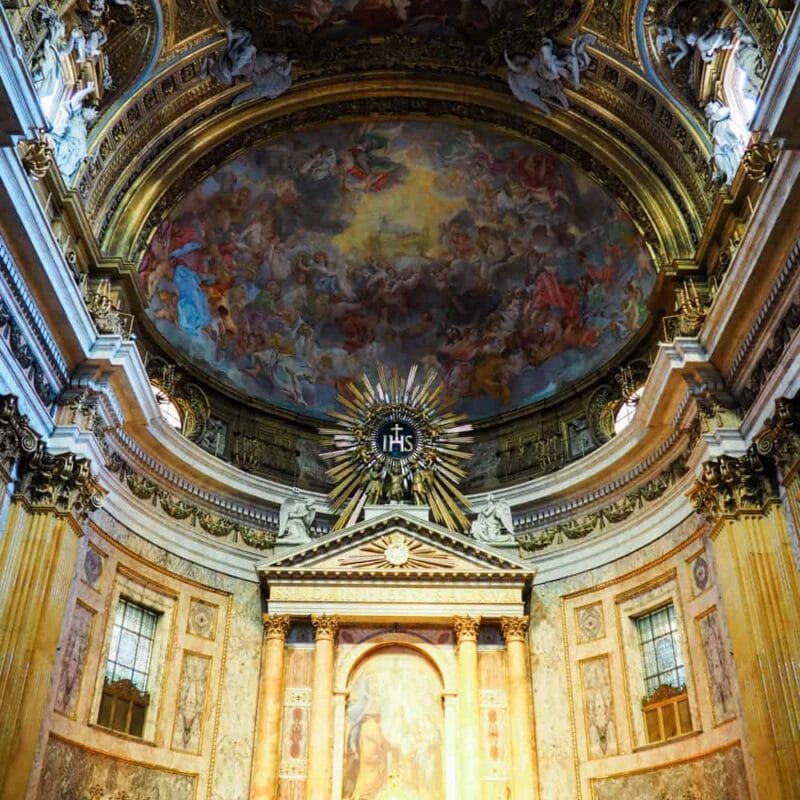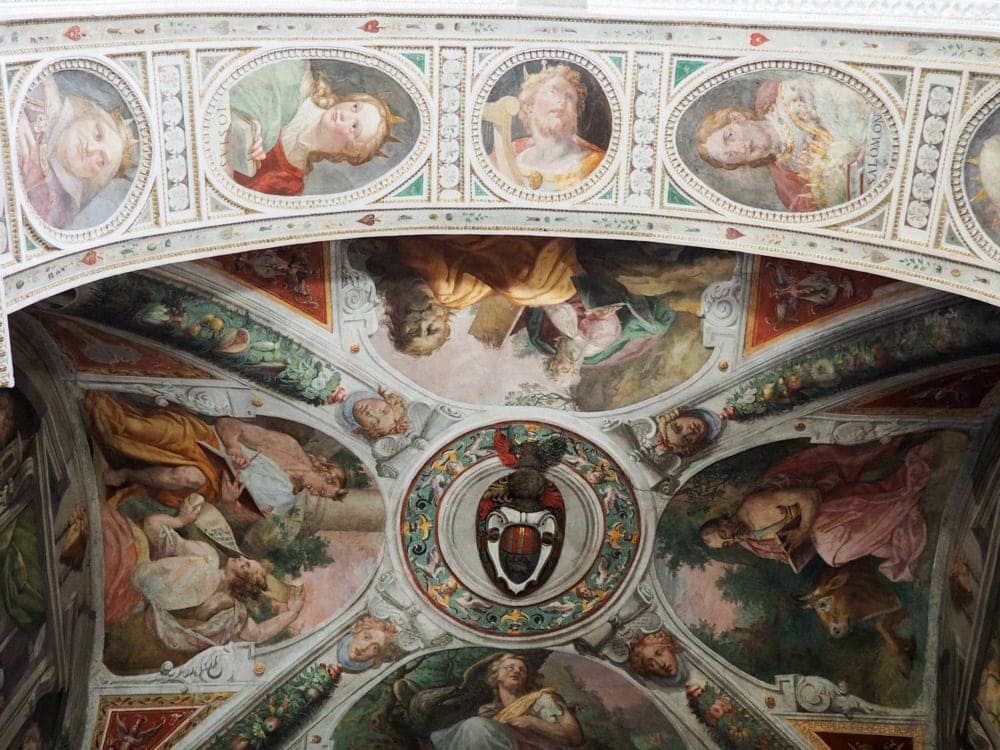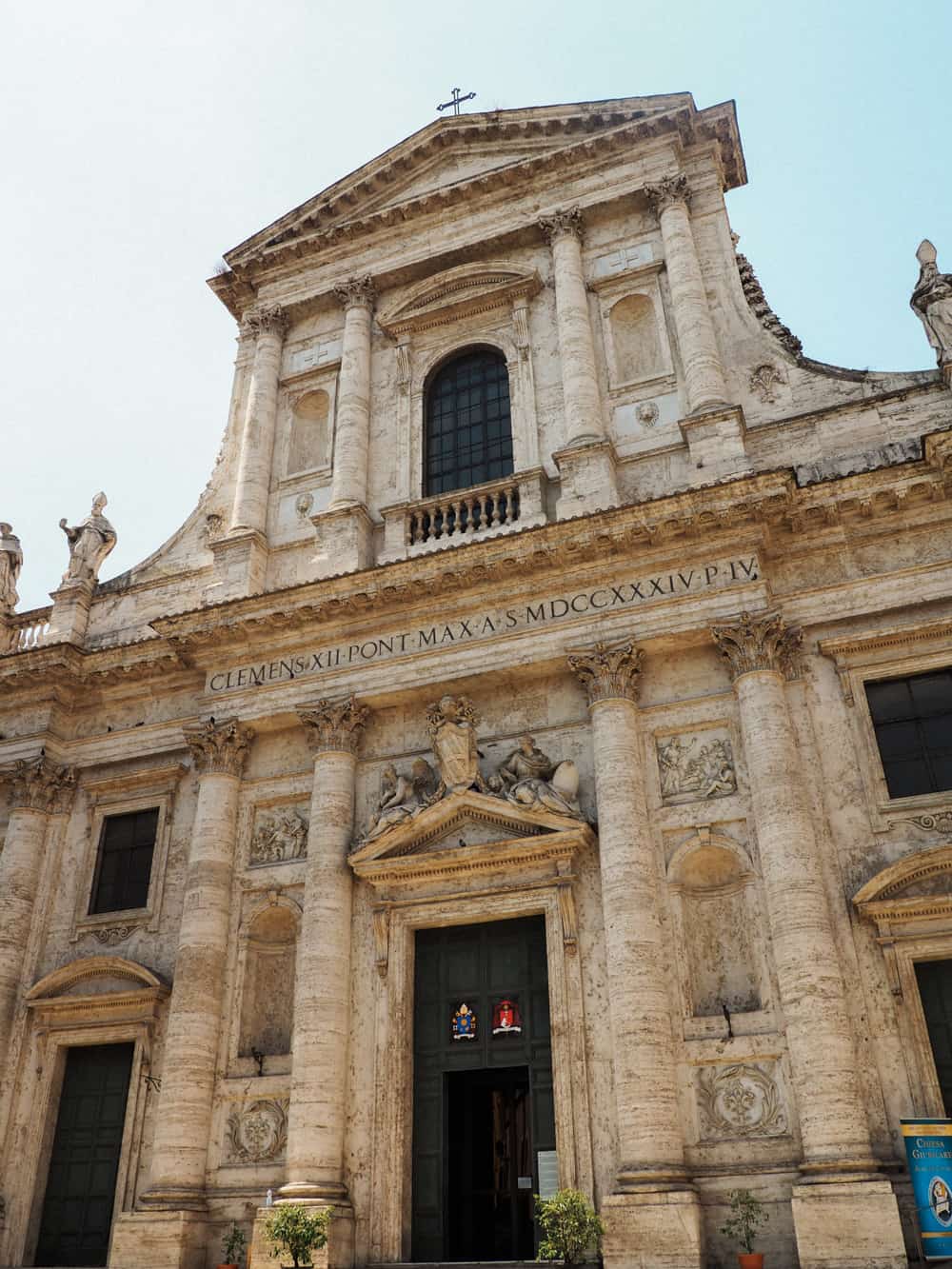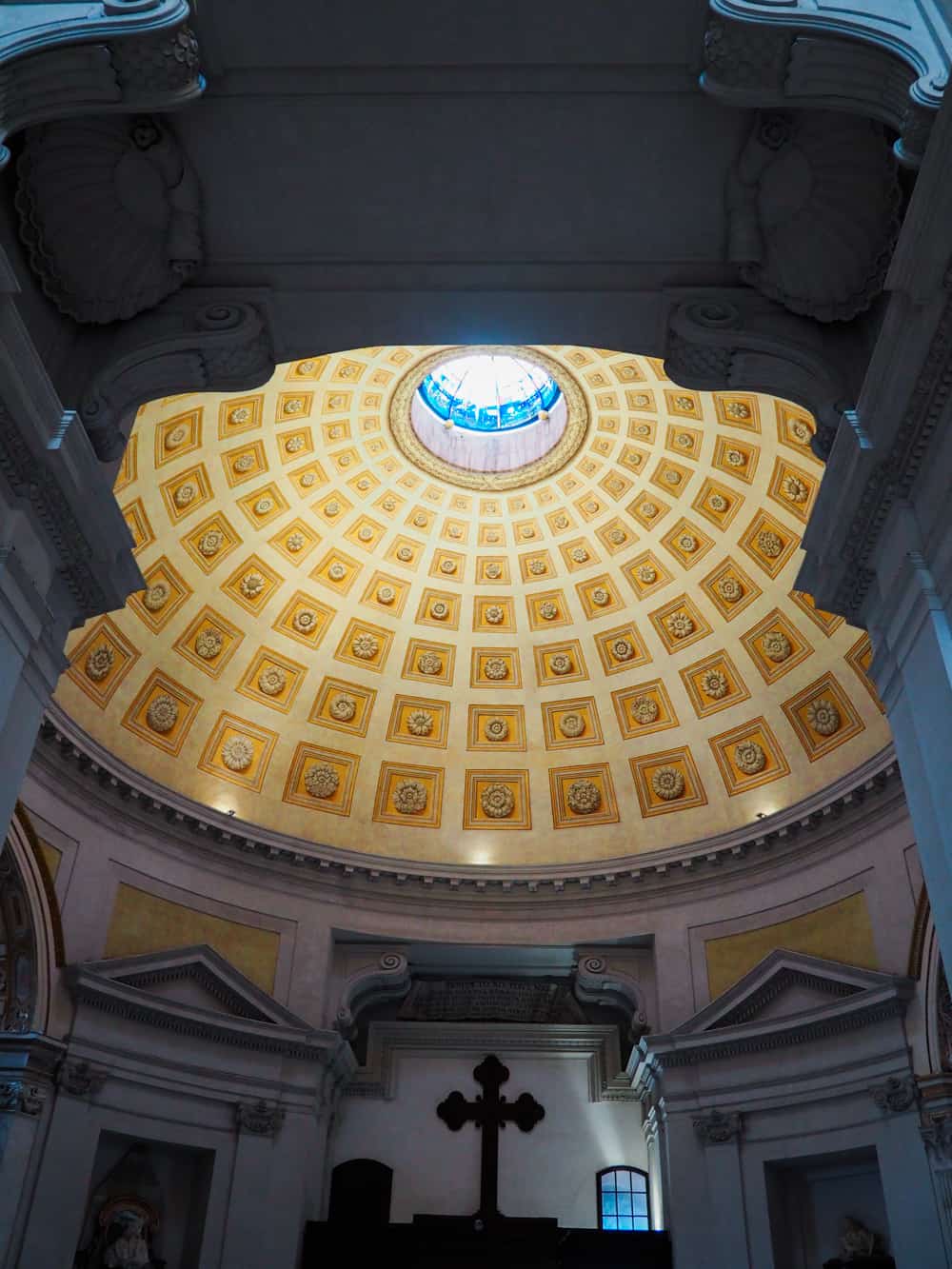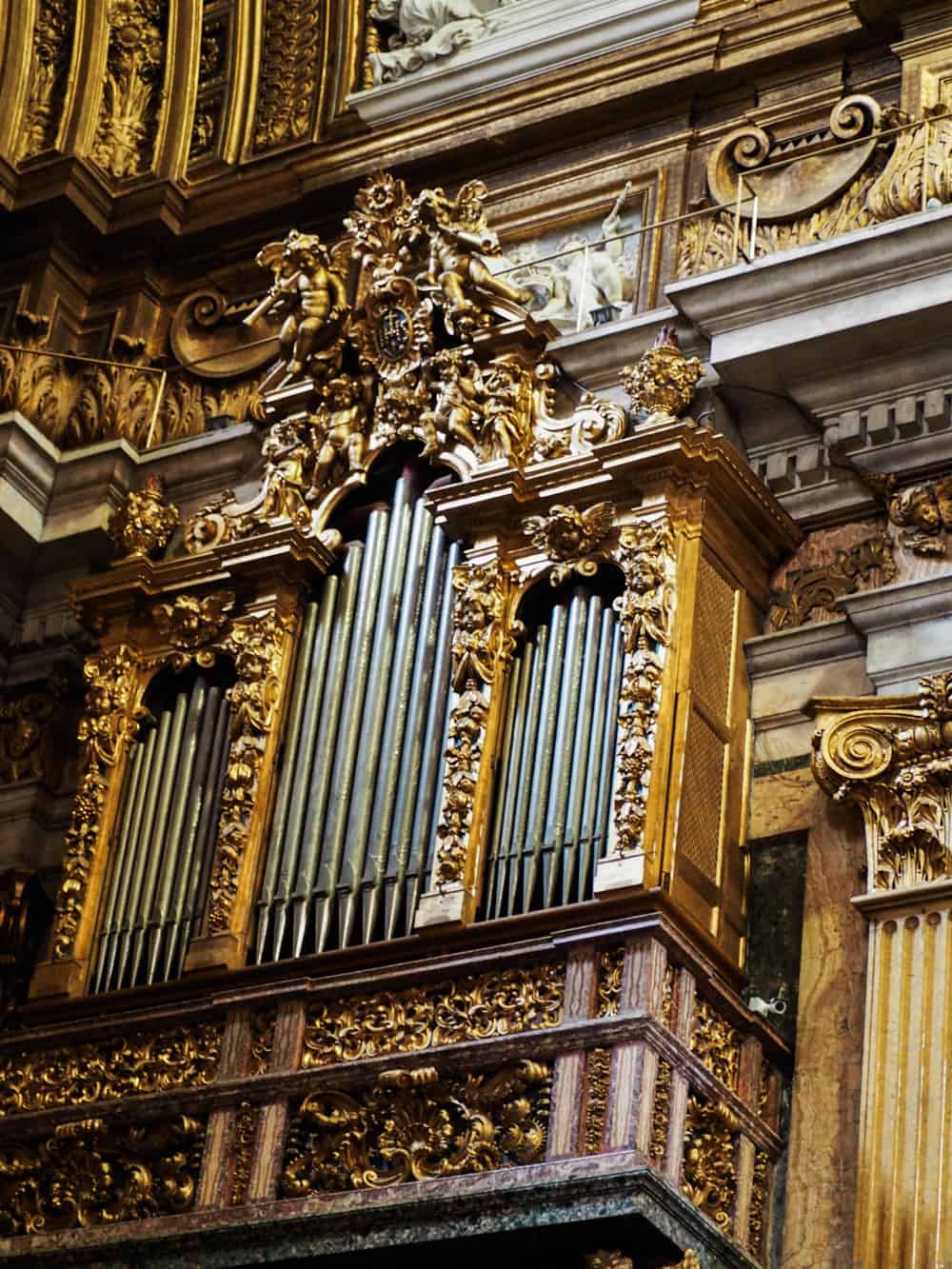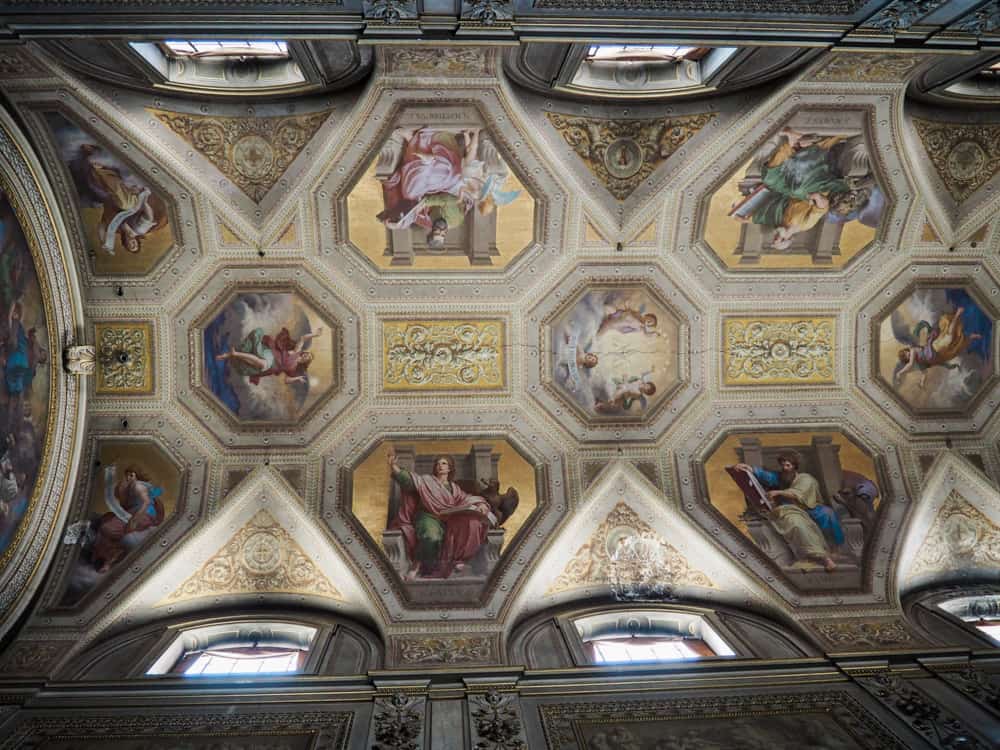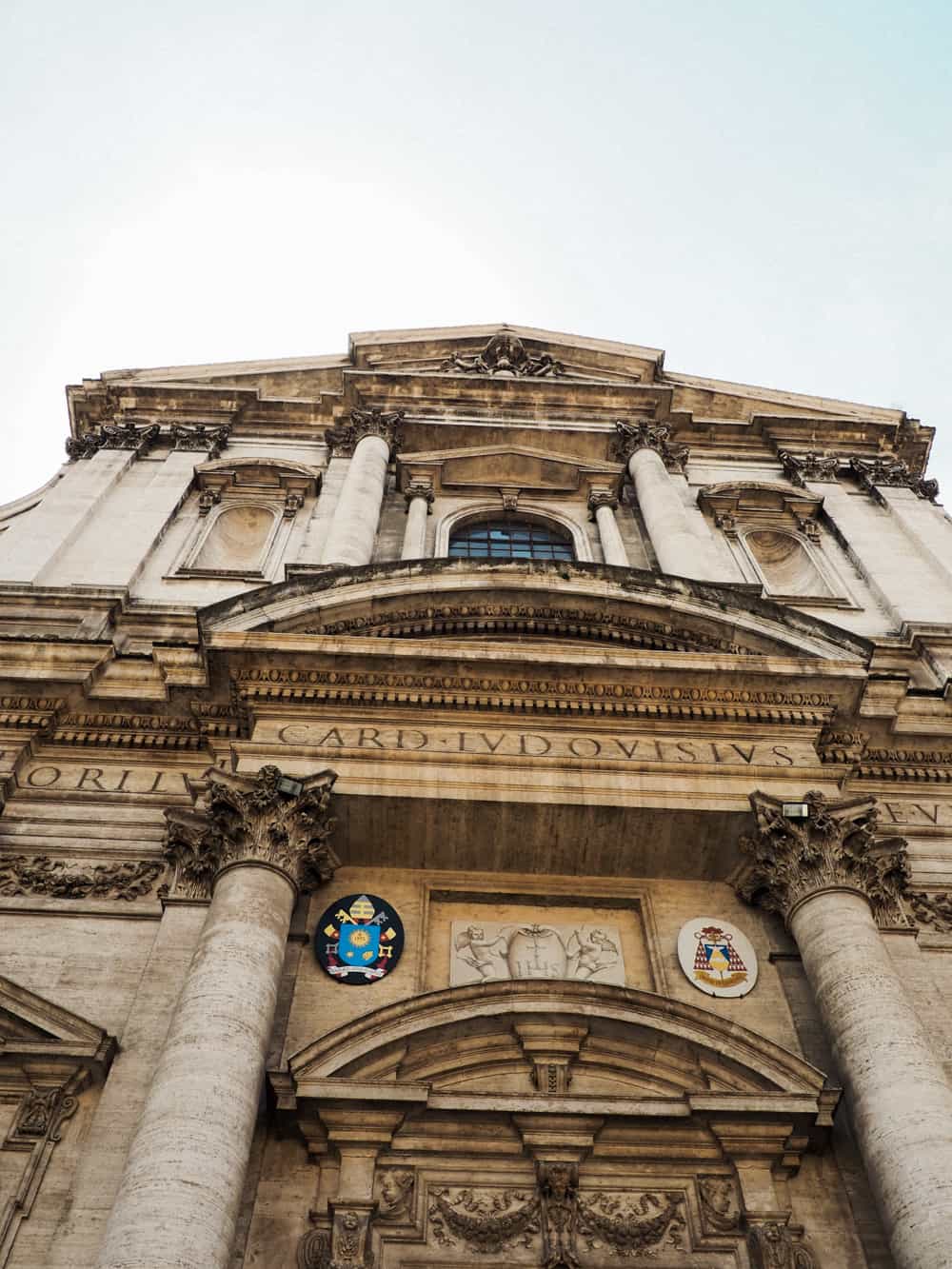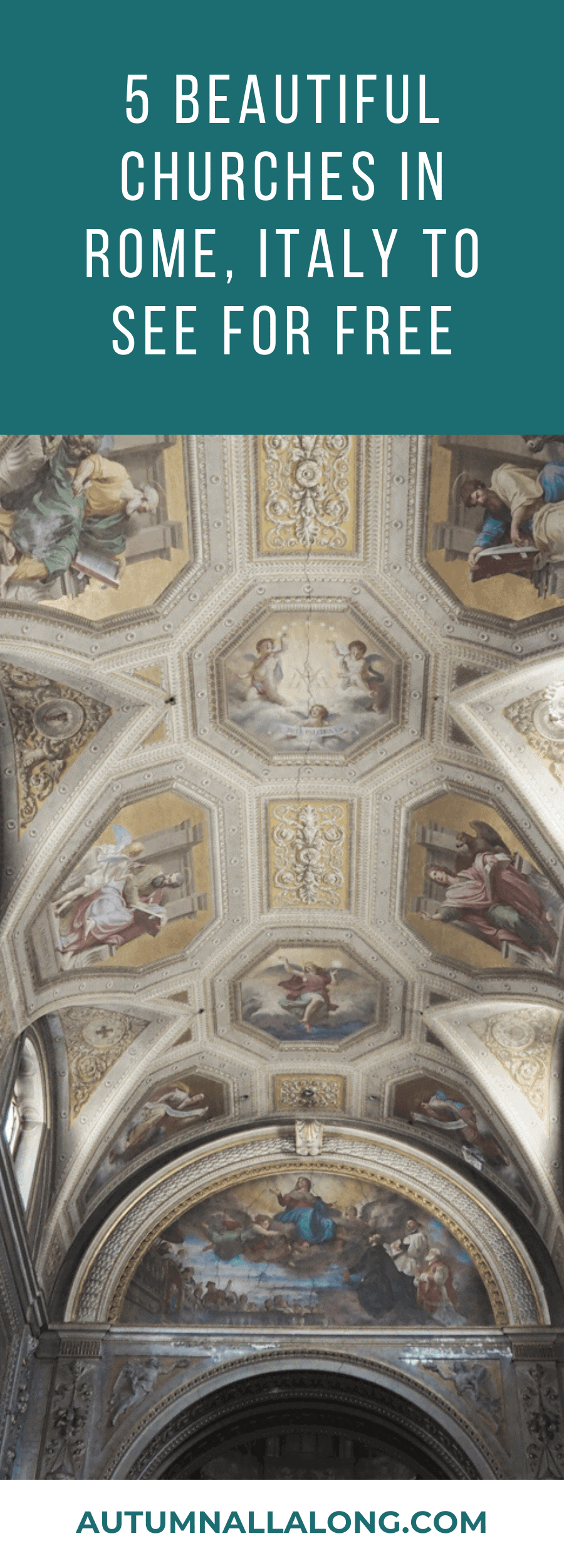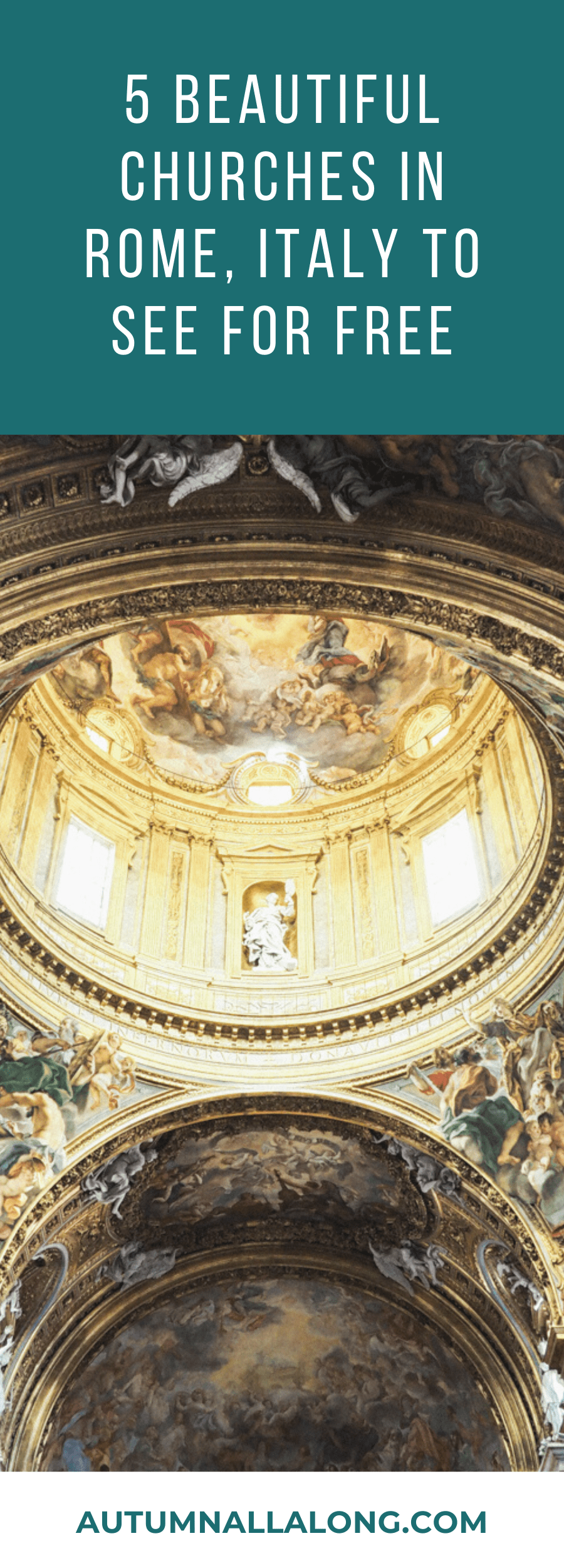When we went to Europe, we didn’t have a very planned itinerary. We thought if we liked somewhere, we would stay longer. If we didn’t like somewhere, we would go home sooner. We researched a little bit, but we mostly planned the vacation as we went (this was very different from our trip to Ireland that was very planned!). It made our trip to Europe pretty exciting and it was the perfect way to finish up grad school.
Out of our experiences in Europe, our experiences in Italy was so full of beautiful art. We found that walking into free churches was the easiest way to see so much and learn. Here are some tips + churches we saw for free below.
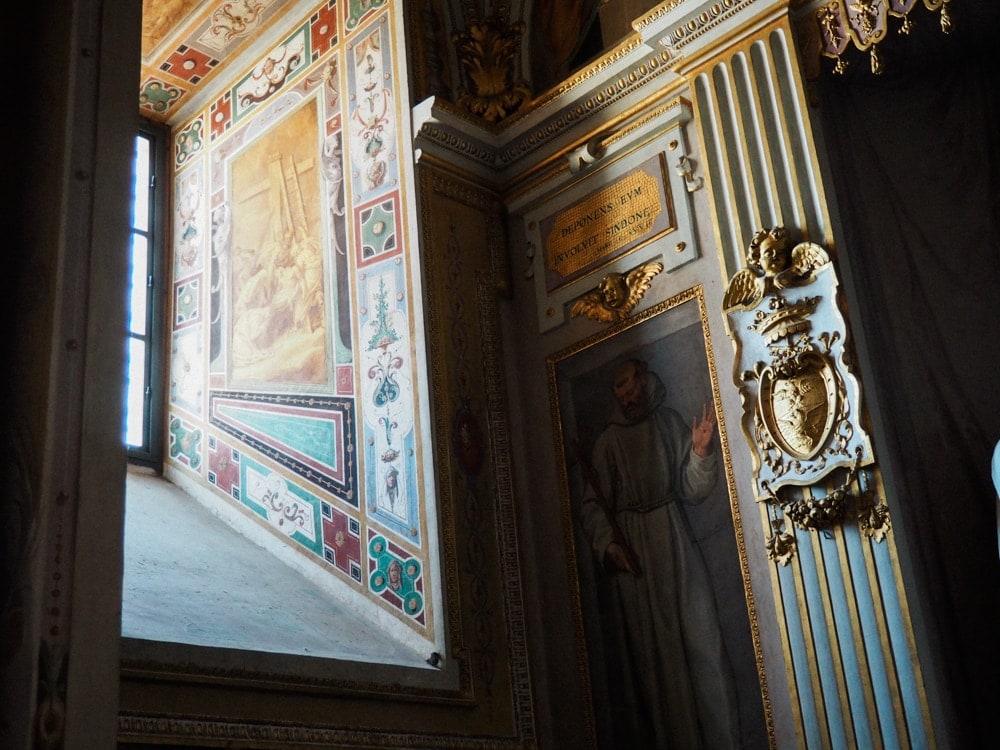

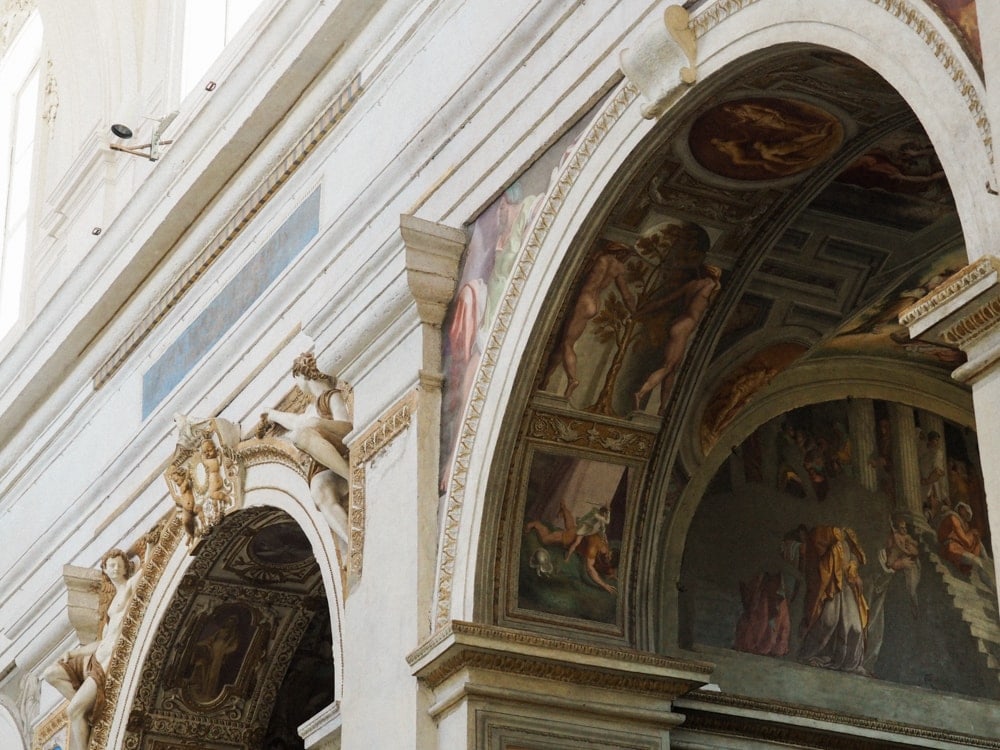
5 tips we learned traveling in Rome
- Rome is so packed during tourist season that it is absolutely worth it to buy passes to skip lines (we waited in line for hours at Vatican in 98 degree weather… never again!).
- They charge a tourist tax in Rome, Italy in restaurants. If you sit, they charge it.
- Things are not always very organized.
- Make sure your hotel has high quality internet service. Every hotel we went to in Italy advertised internet, but it was so slow we could not research things on our trip. Restaurants advertise free wifi as a selling point… so I think they’re aware.
- Going into churches is free… and the easiest way to see SO MUCH art.
Our family LOVES free and we loved seeing the free churches in Rome, Italy. The art in the churches in Rome, Italy was created by world renowned architects, sculptors, and painters. I stood in absolute awe realizing that many of these artists were teenagers.
RELATED // areas where we save money
5 beautiful churches in Rome, Italy to see for free
The San Giovanni dei Fiorentini church in Rome, Italy
Address: Via Acciaioli, 2, 00186 Roma RM, Italy
The San Giovanni dei Fiorentini church in Rome, Italy is the national church of Florence in Rome and is dedicated to John the Baptist. While the groundbreaking was in 1523, the church wasn’t completed until 1734. The architect was chosen through a competition, however, the church was designed by someone else.
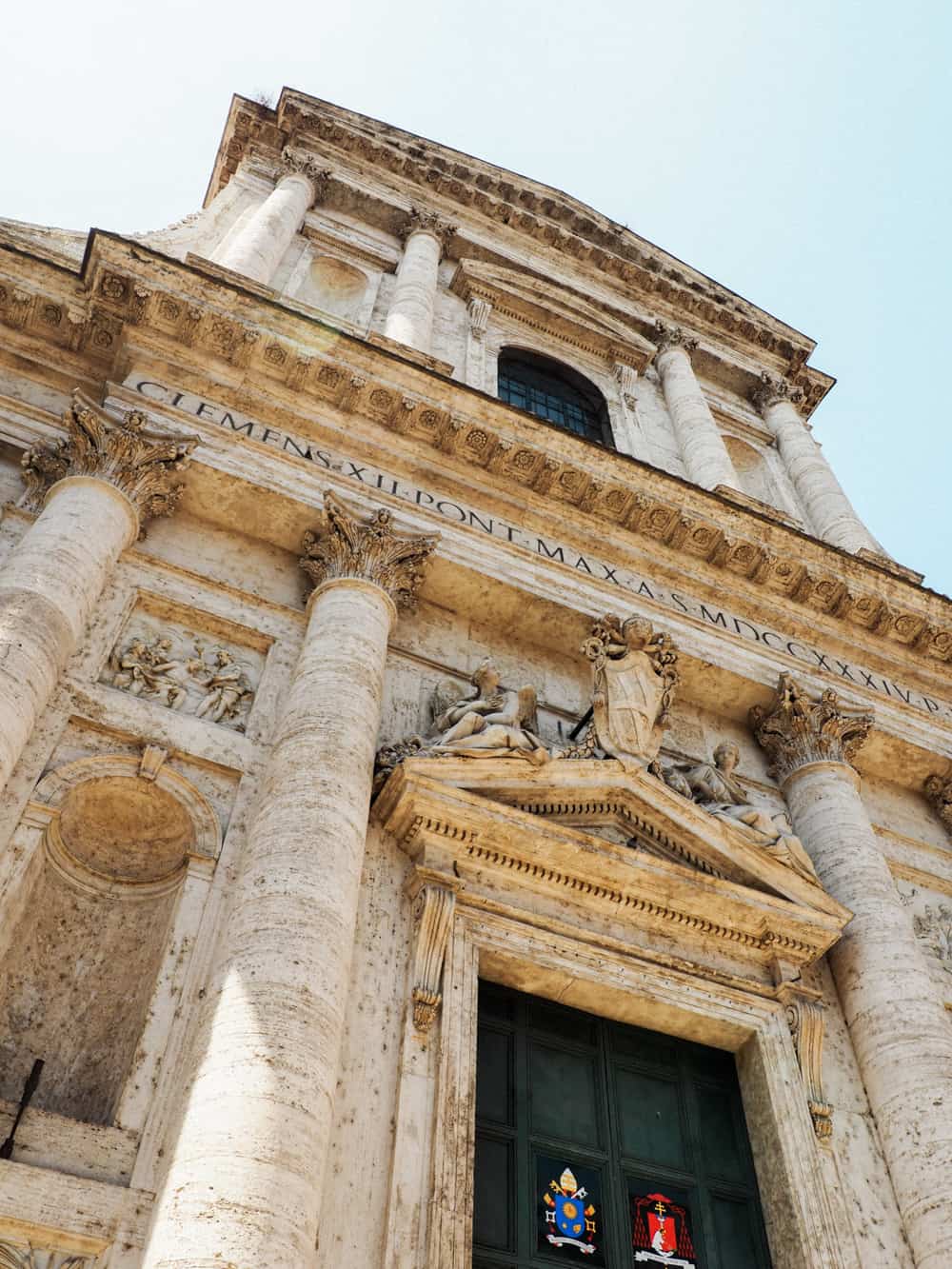
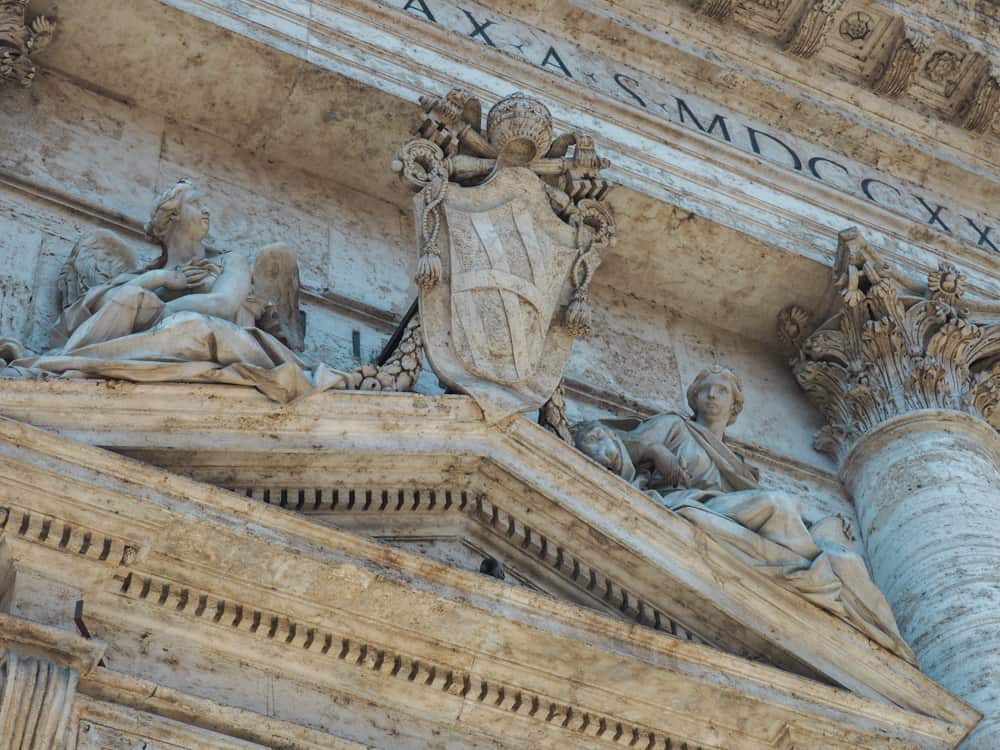
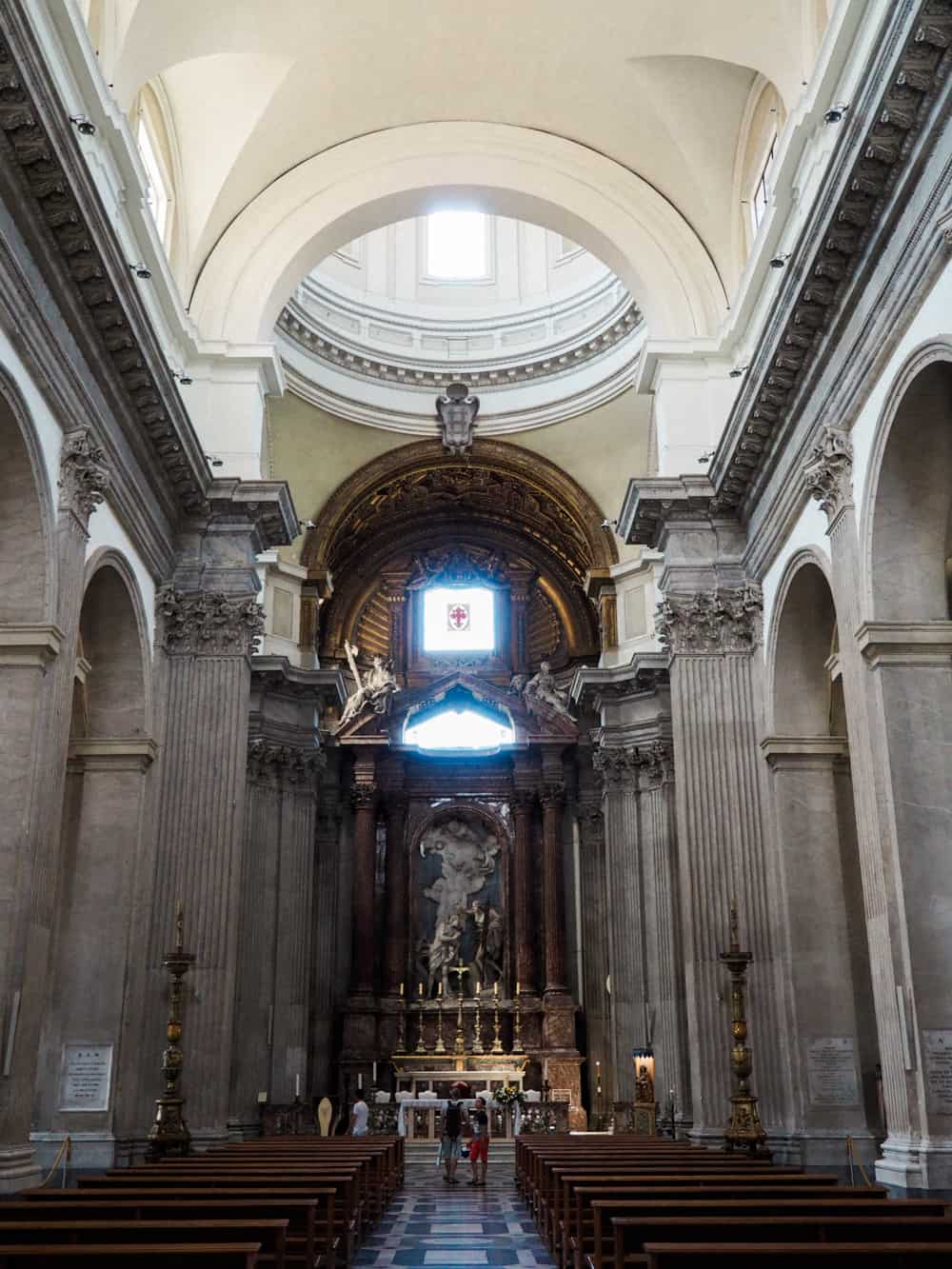
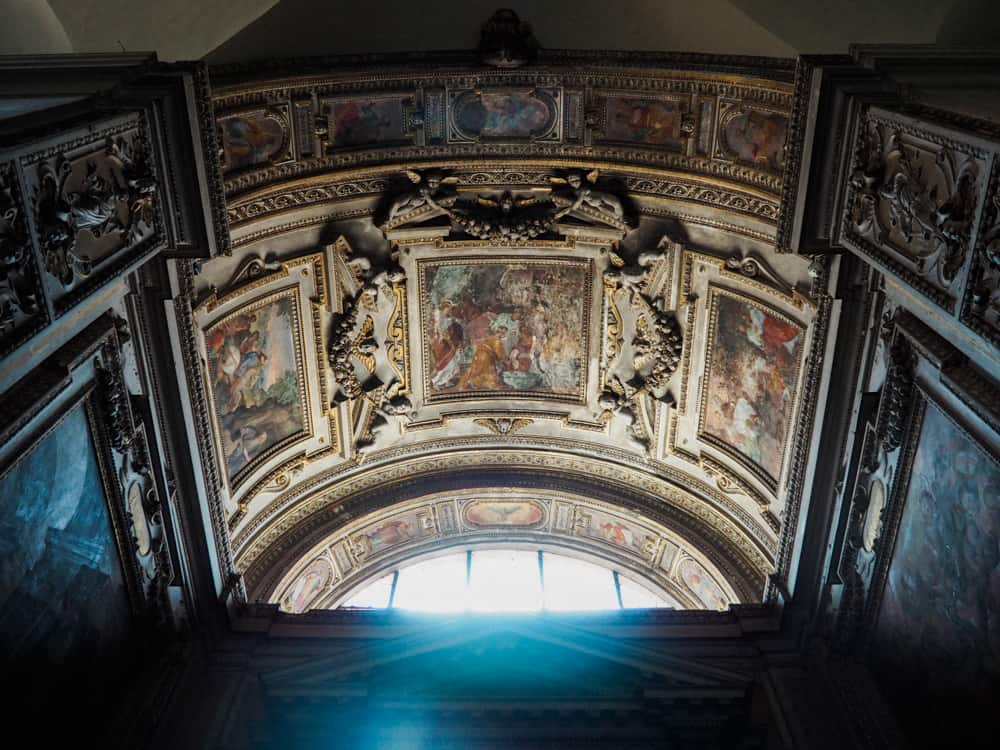
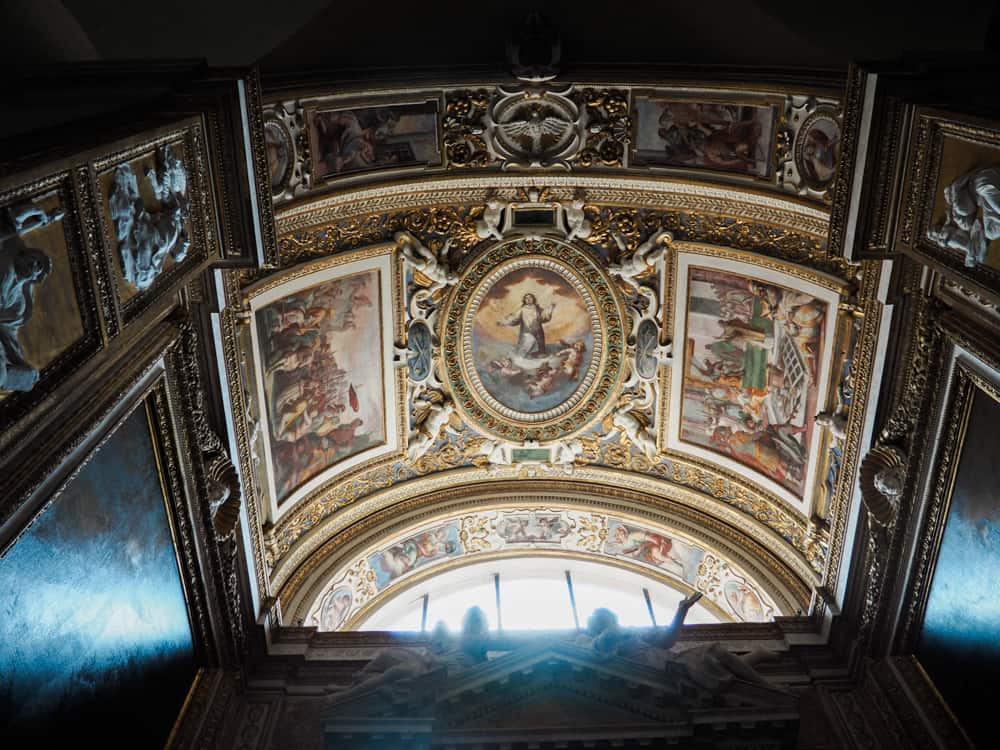
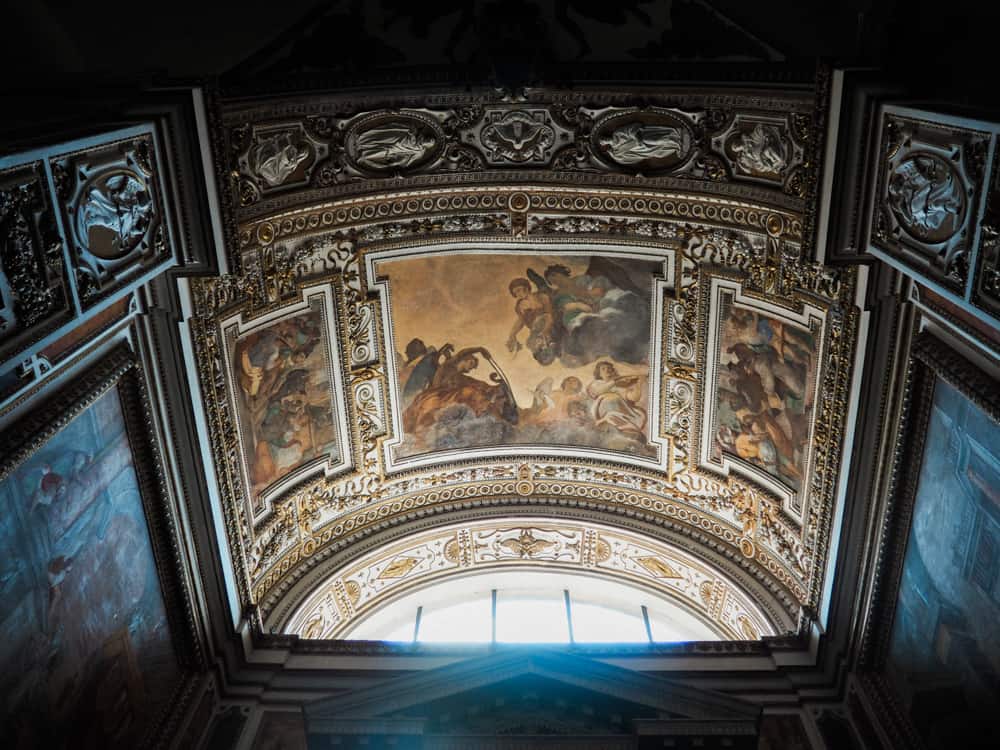
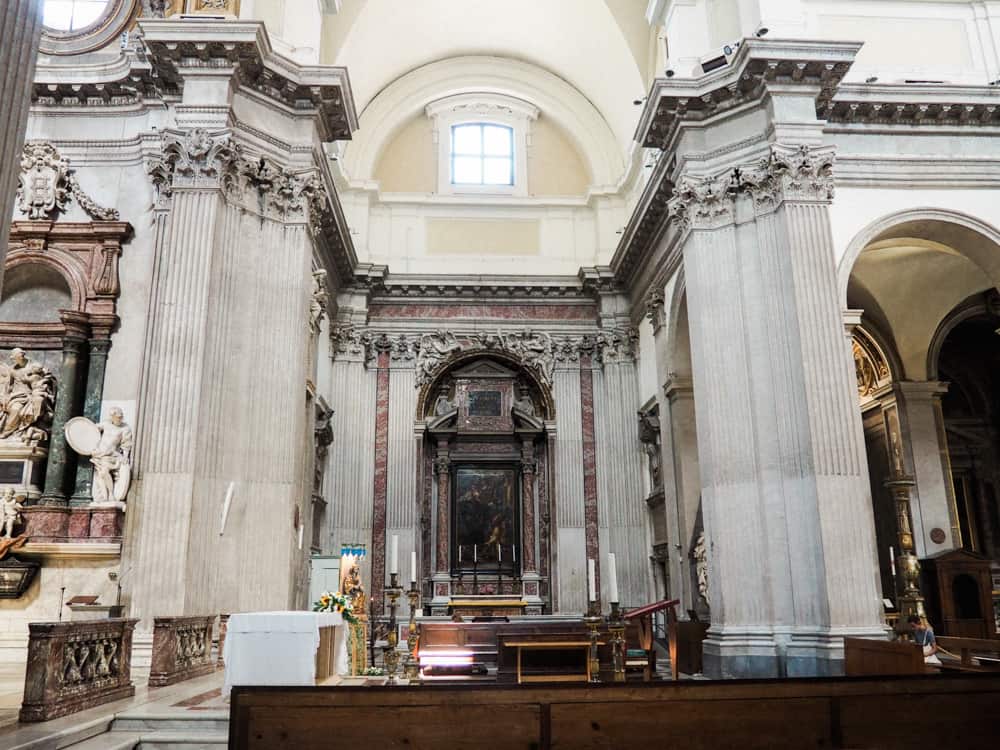
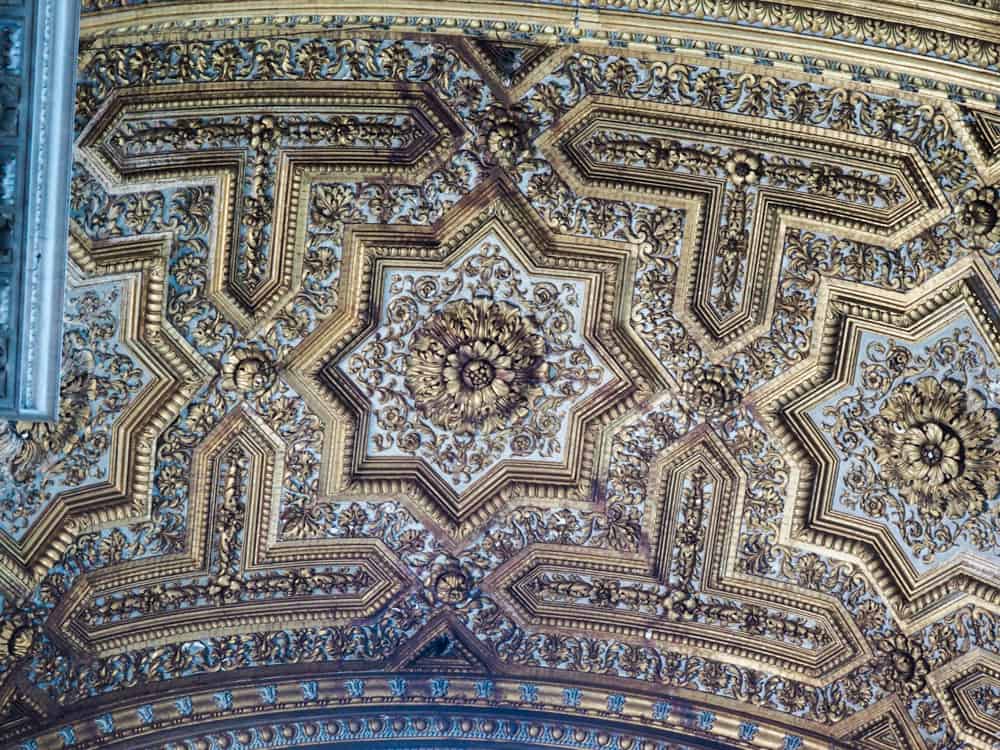
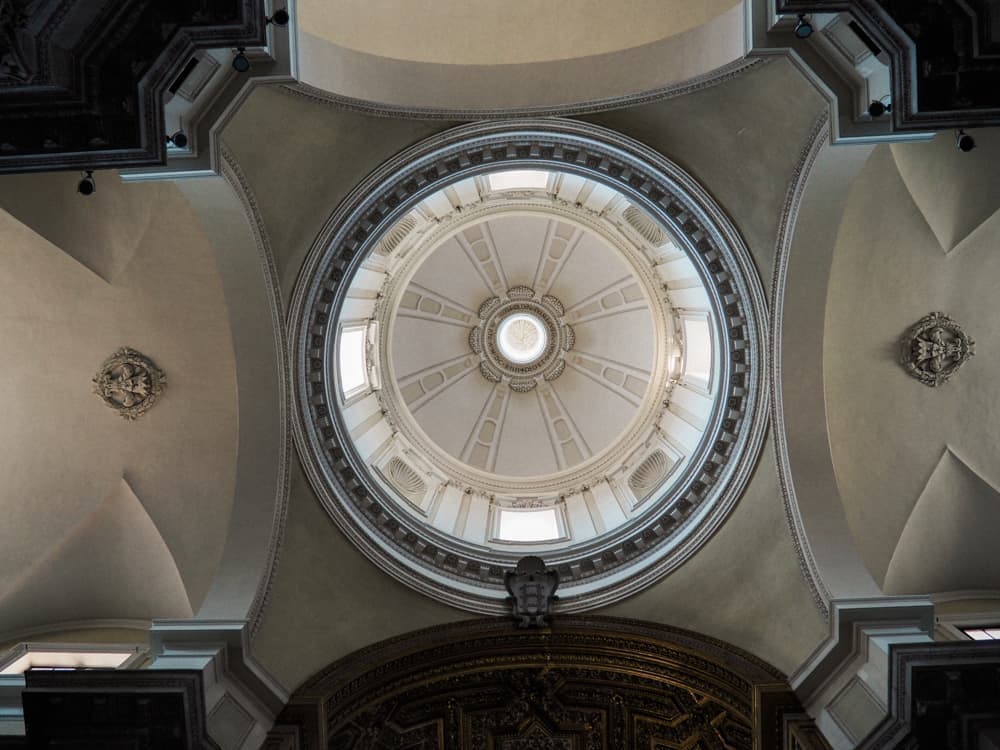
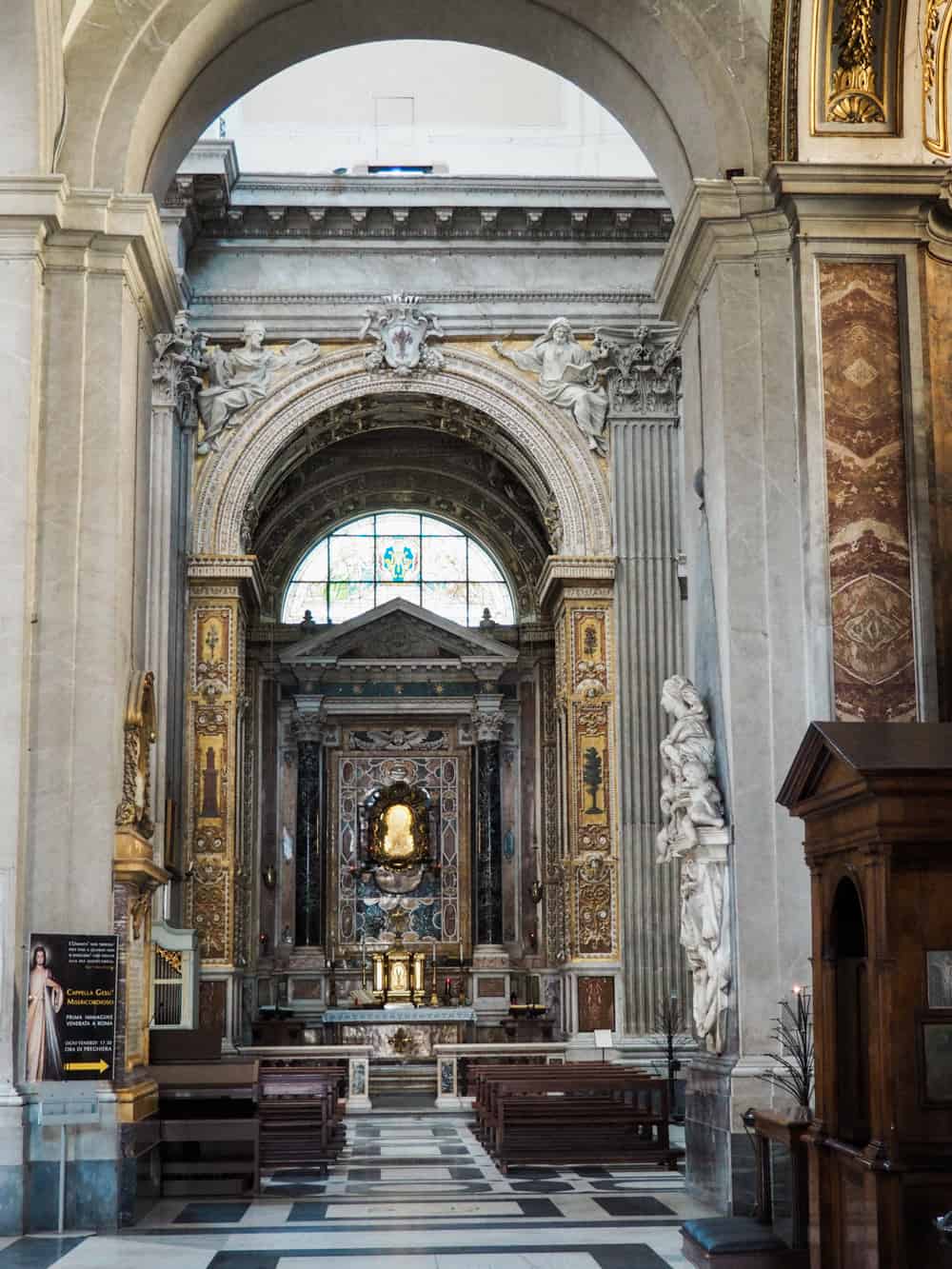
The Basicilica of St. Mary of the Angels and the Martyrs in Rome, Italy
Address: Piazza della Repubblica, 00185 Roma RM, Italy
The Basicilica of St. Mary of the Angels and the Martyrs was built inside the ruined Roman baths that formerly occupied the plaza in Rome, Italy. The church was constructed in the 16th century. A main feature of the nasicilica is the meridian line within the church. According to Wikipedia, this particular church was chosen for the meridian line because:
(1) Like other baths in Rome, the building was already naturally southerly oriented, so as to receive unobstructed exposure to the sun; (2) the height of the walls allowed for a long line to measure the sun’s progress through the year more precisely; (3) the ancient walls had long since stopped settling into the ground, ensuring that carefully calibrated observational instruments set in them would not move out of place; and (4) because it was set in the former baths of Diocletian, it would symbolically represent a victory of the Christian calendar over the earlier pagan calendar.
The meridian line was restored in 2002 and is operational now.
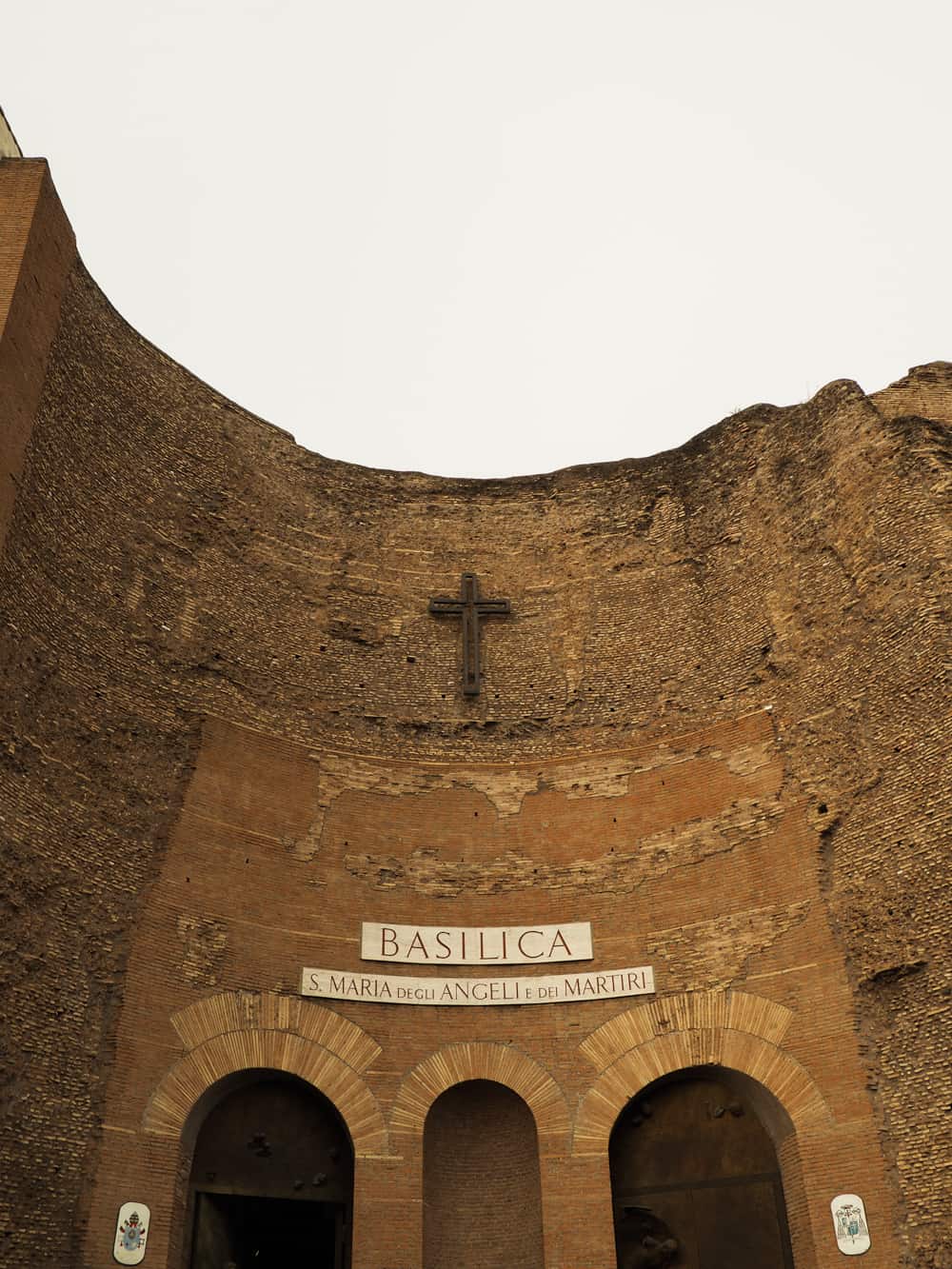
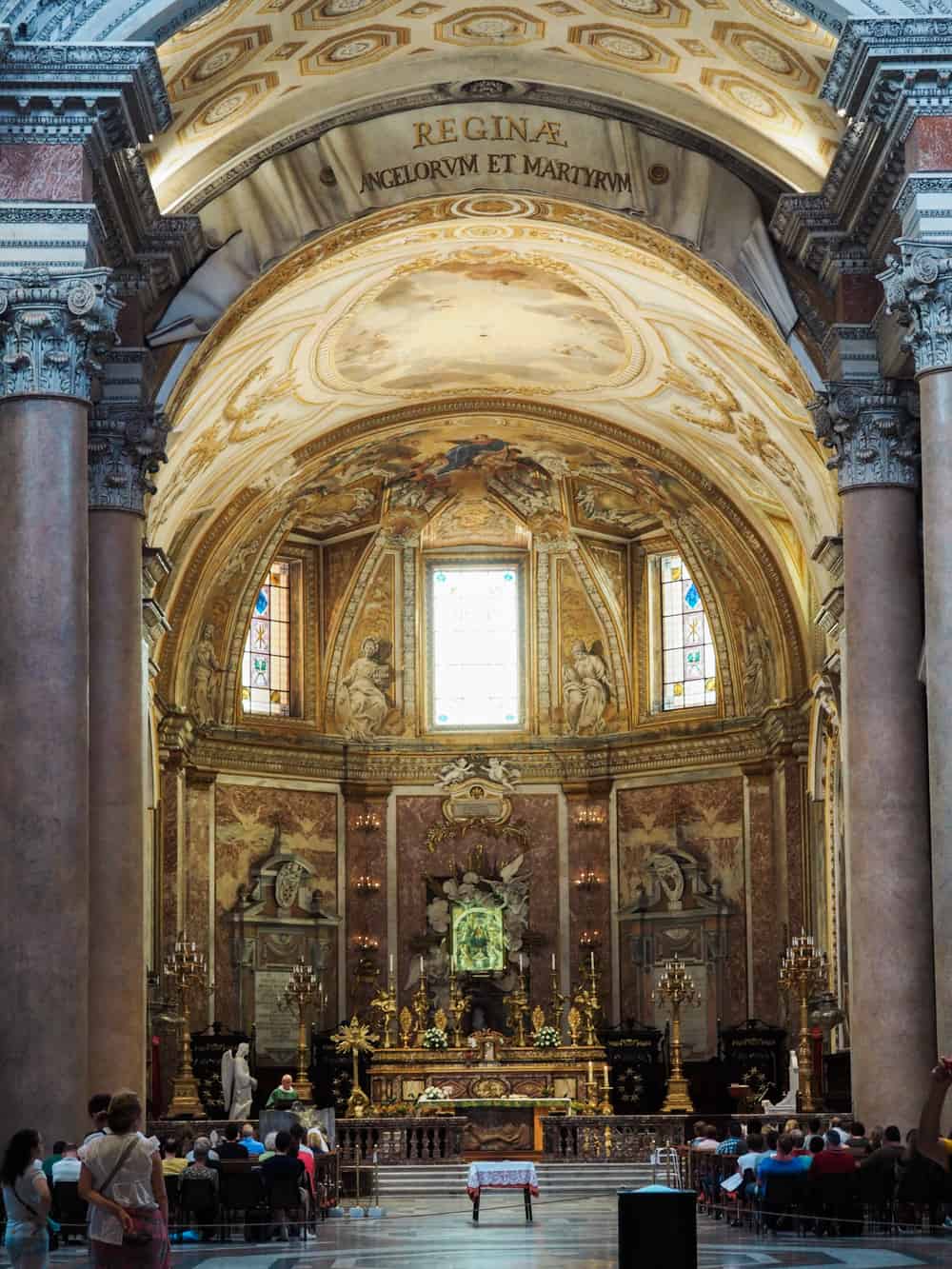

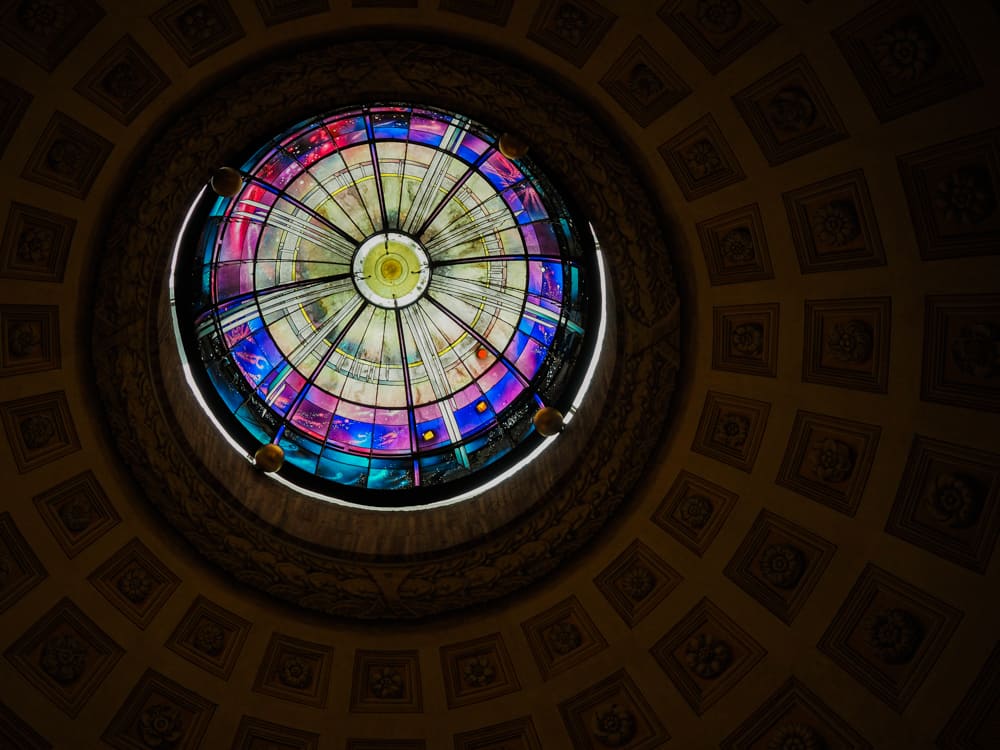
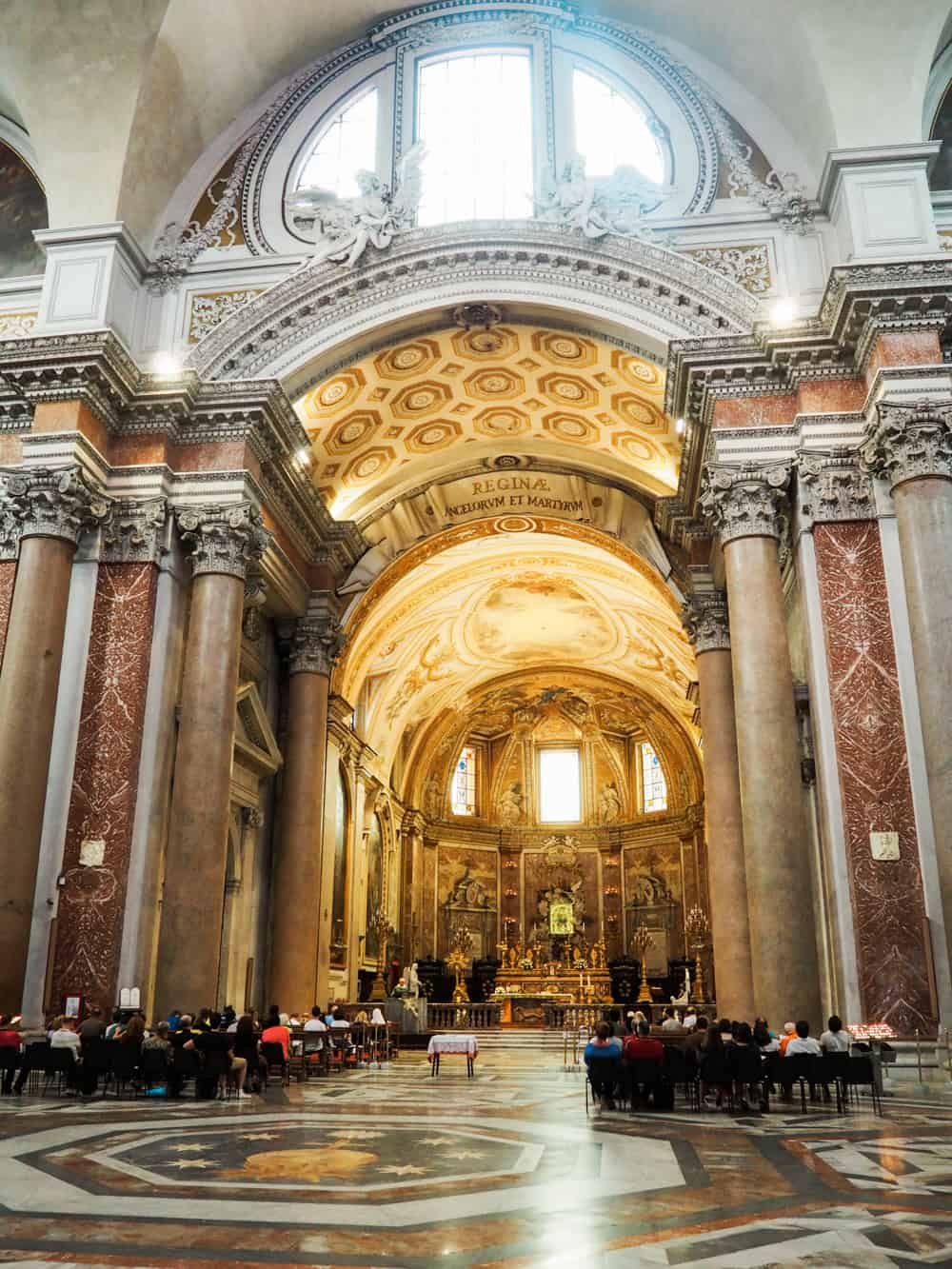
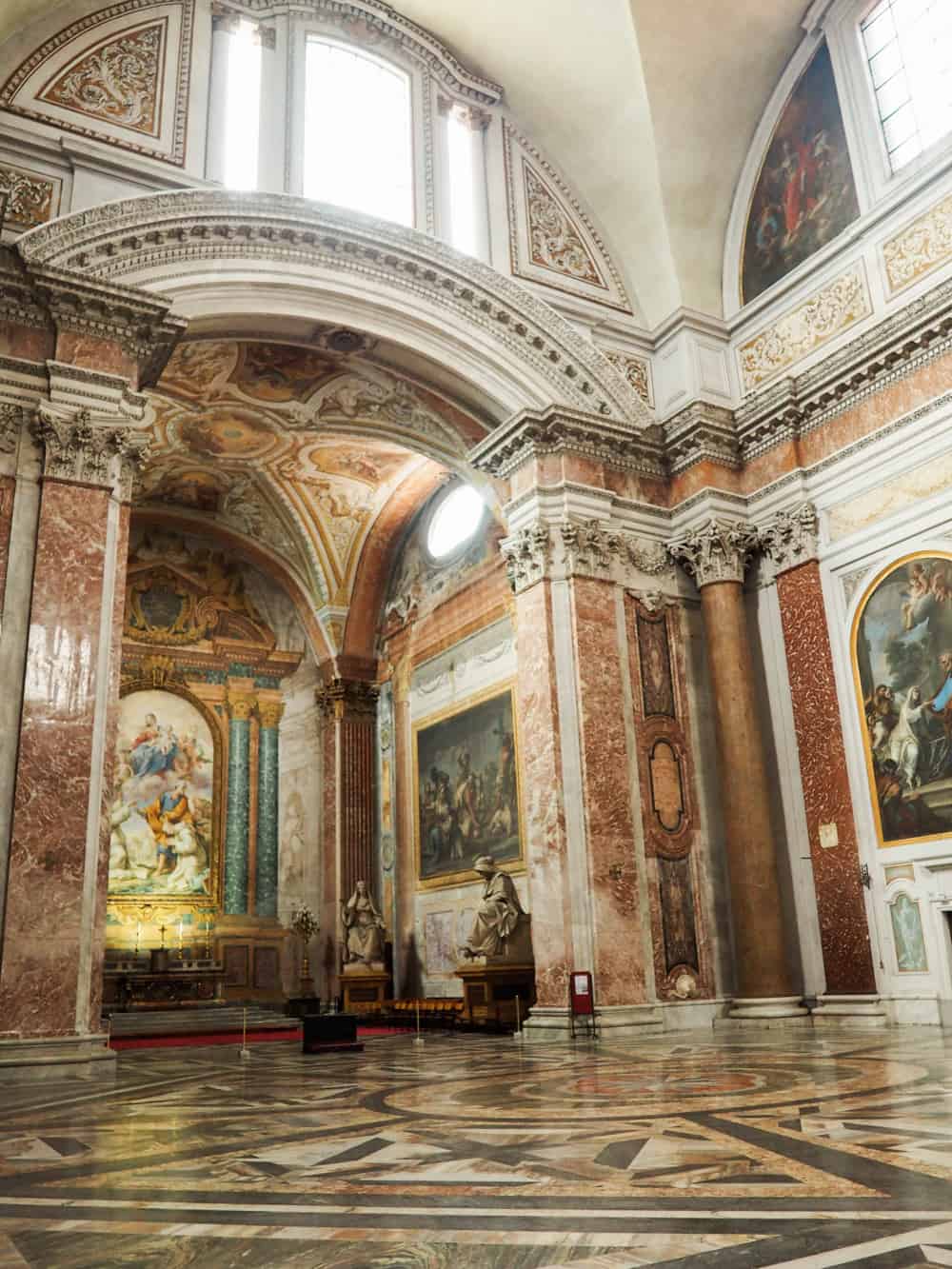
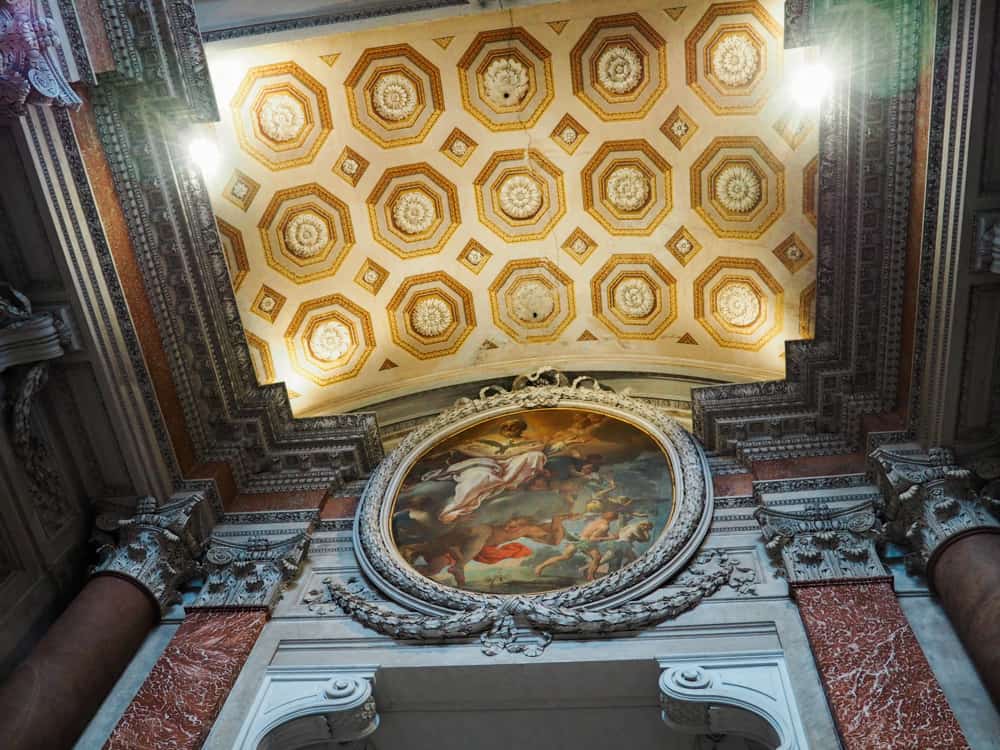
Church of the Gesù
Address: Via degli Astalli, 16, Roma RM, Italy
The Church of the Gesù in Rome, Italy is the mother church of the Jesuits. The facade was the first baroque facade which introduced the style into architecture. The church had its groundbreaking, completion, and consecration in an impressive 16 year period from 1568-1584. The church architecture of the church is a model of Jesuit churches throughout the world. The adjacent palazzo is now a place for Jesuit scholars to study to prepare for ordination.
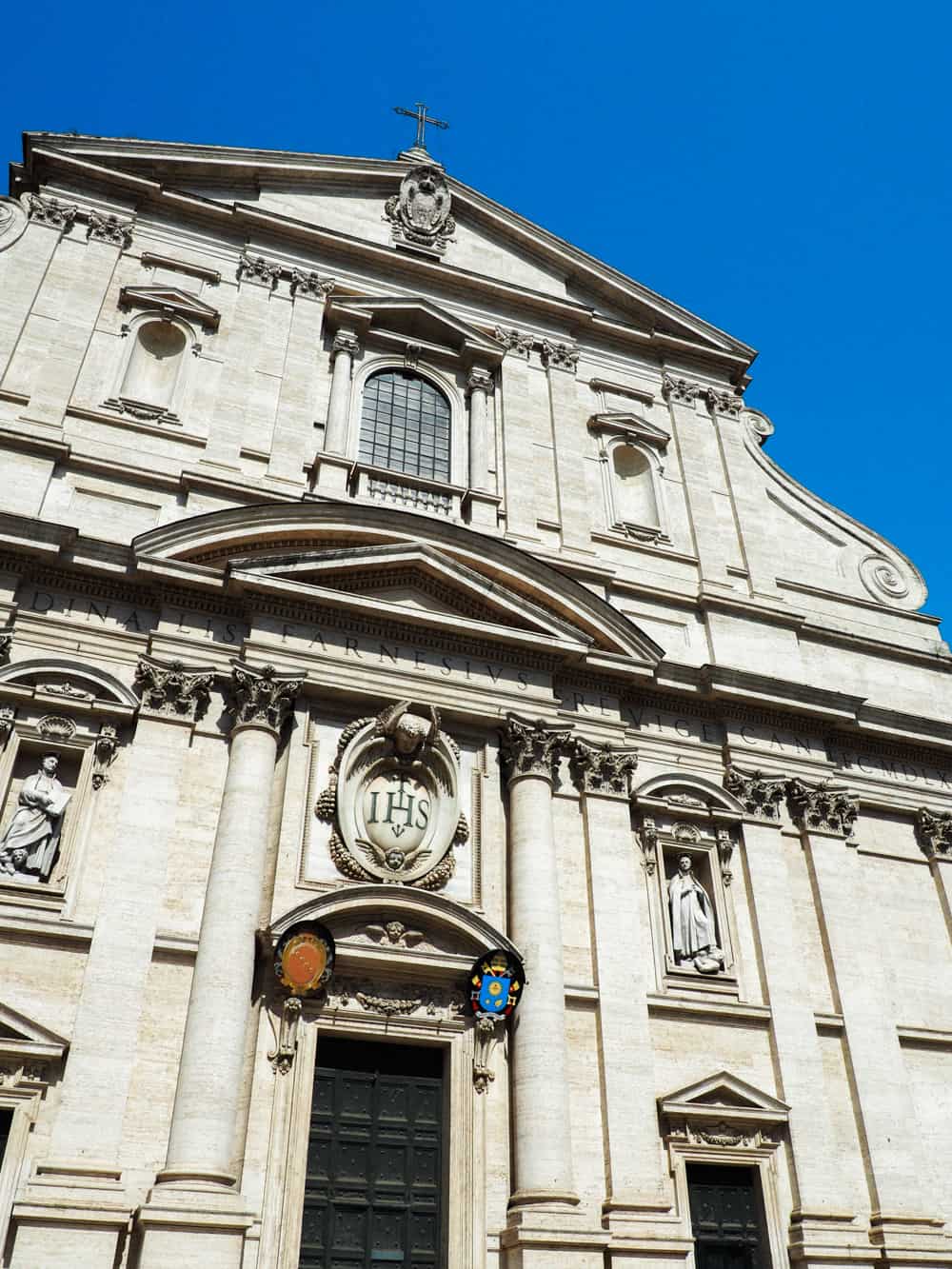
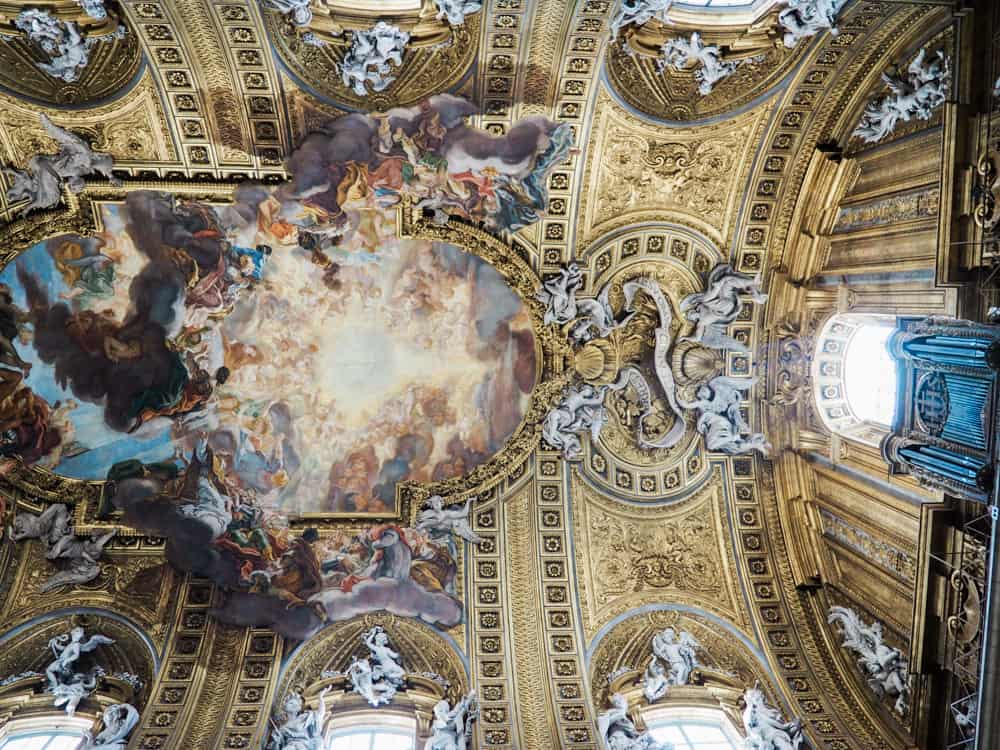
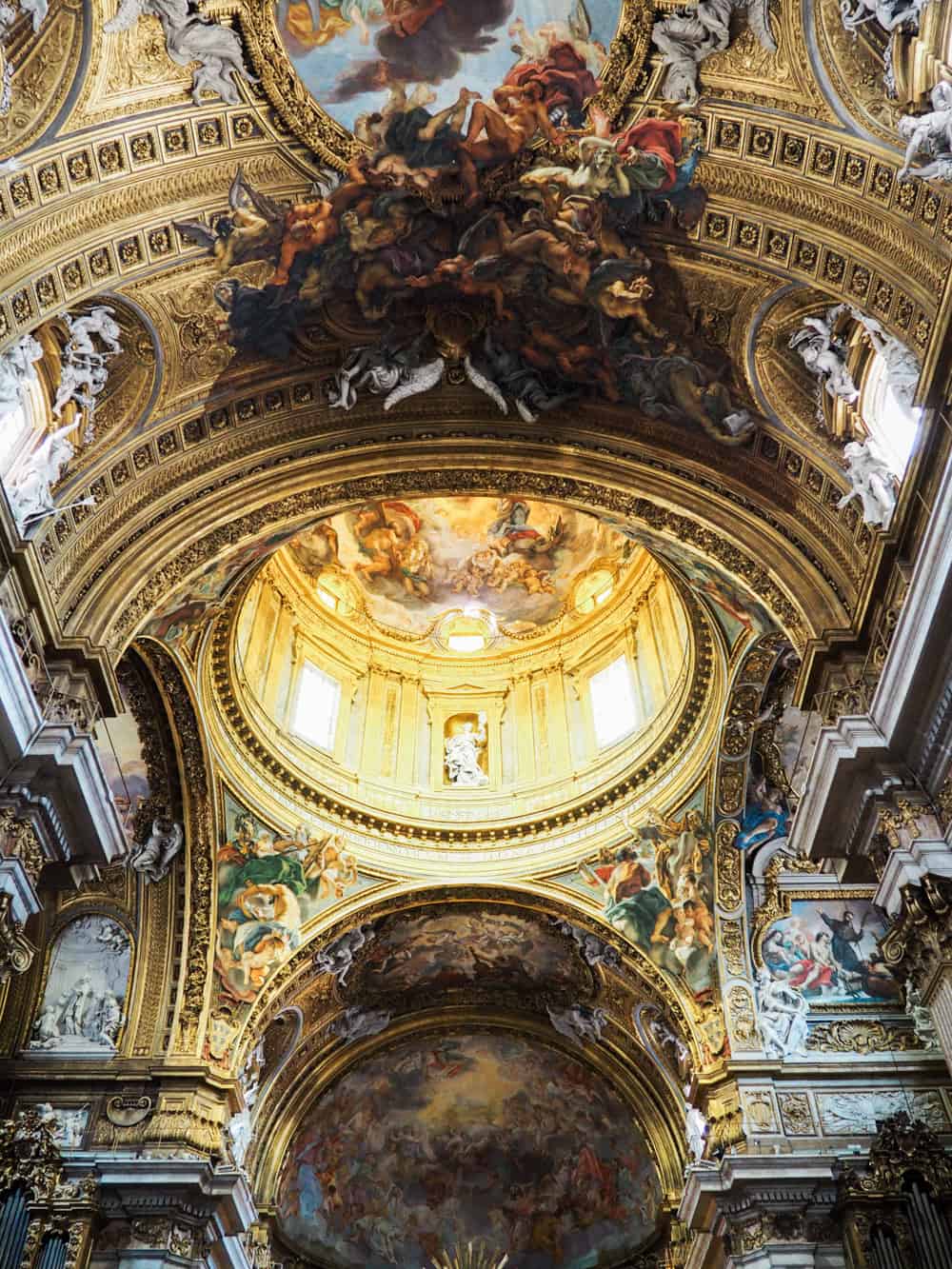
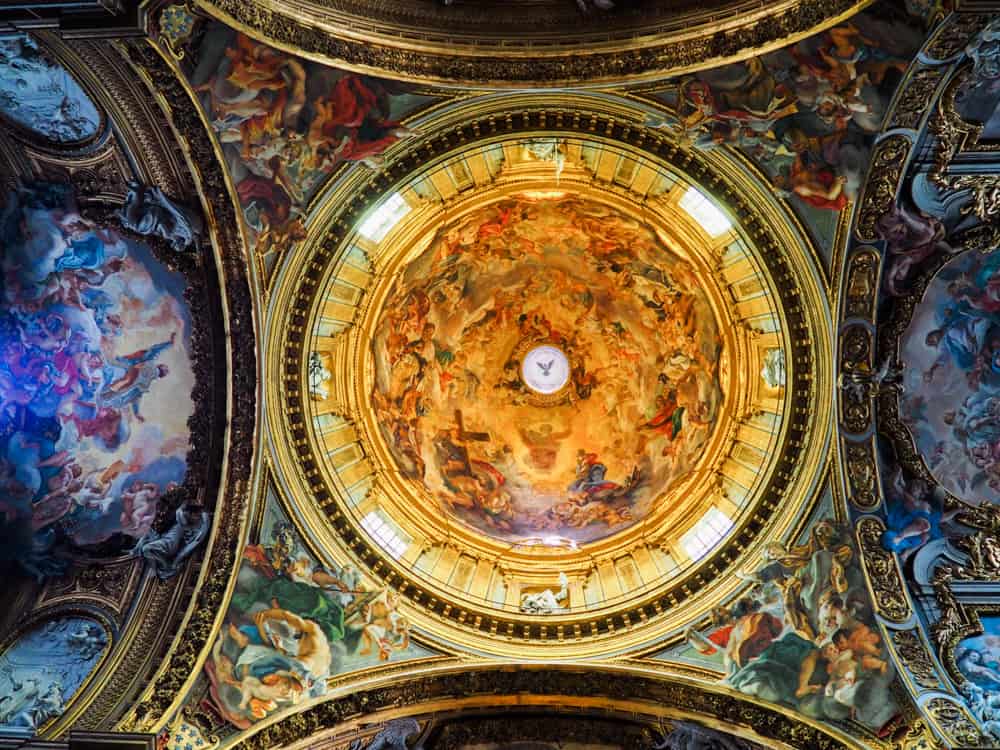
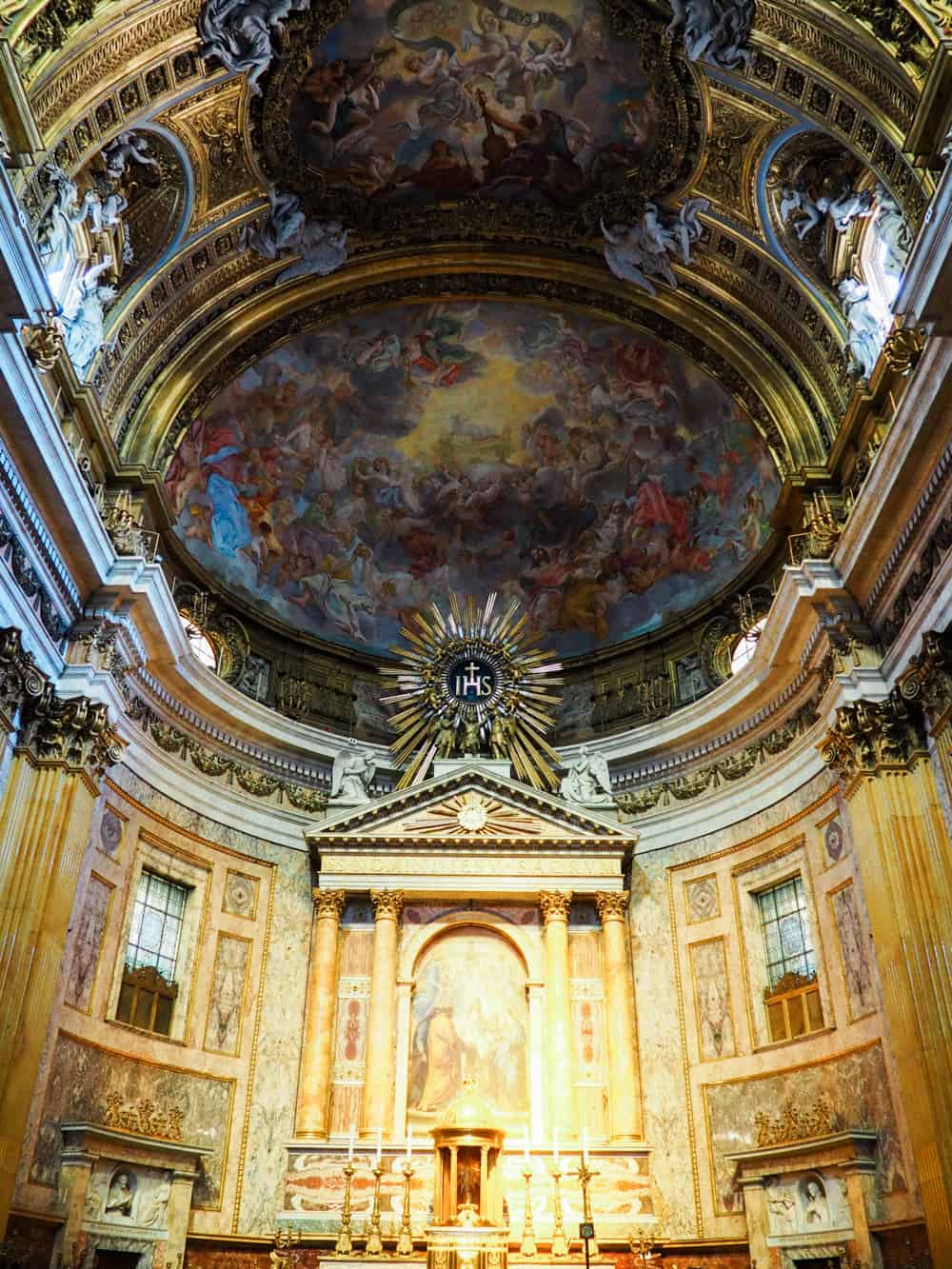
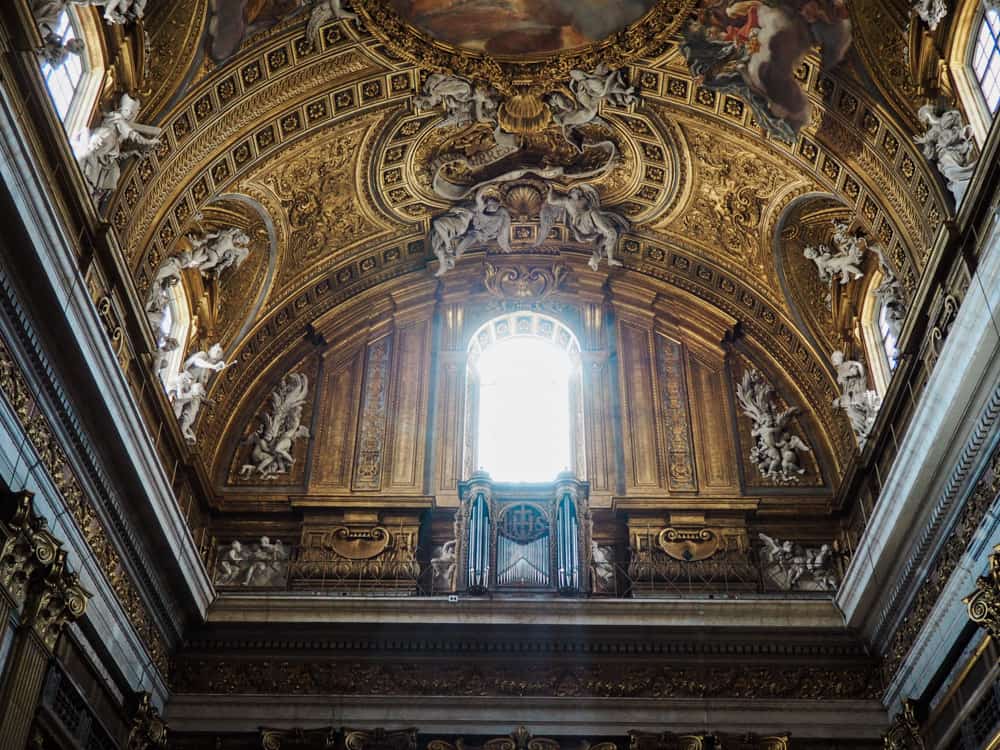
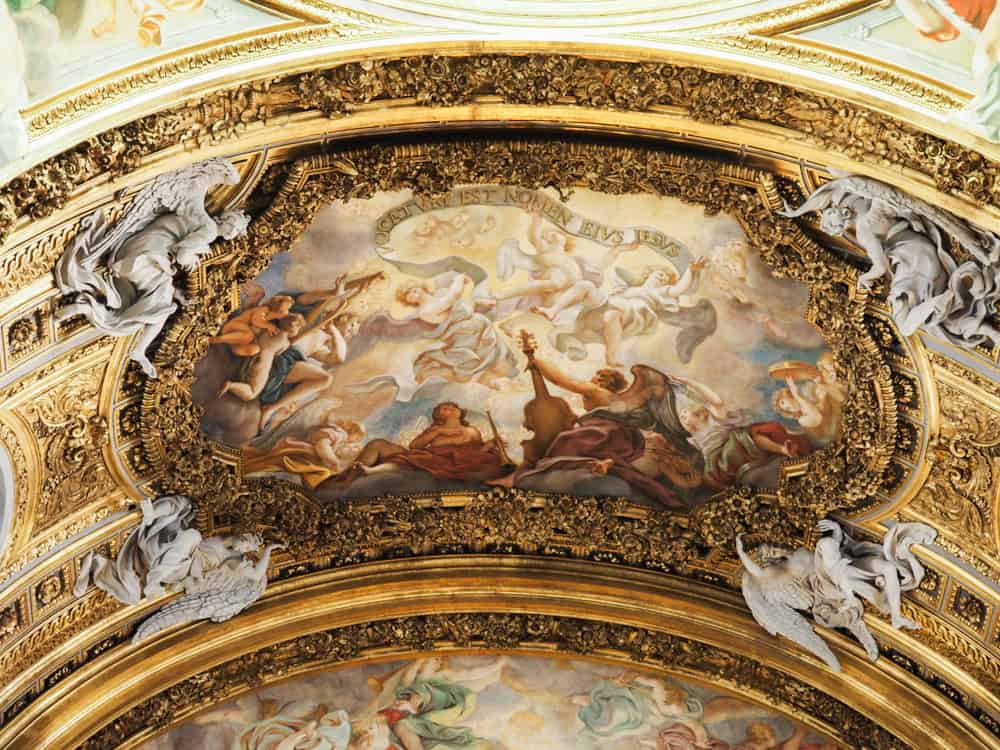
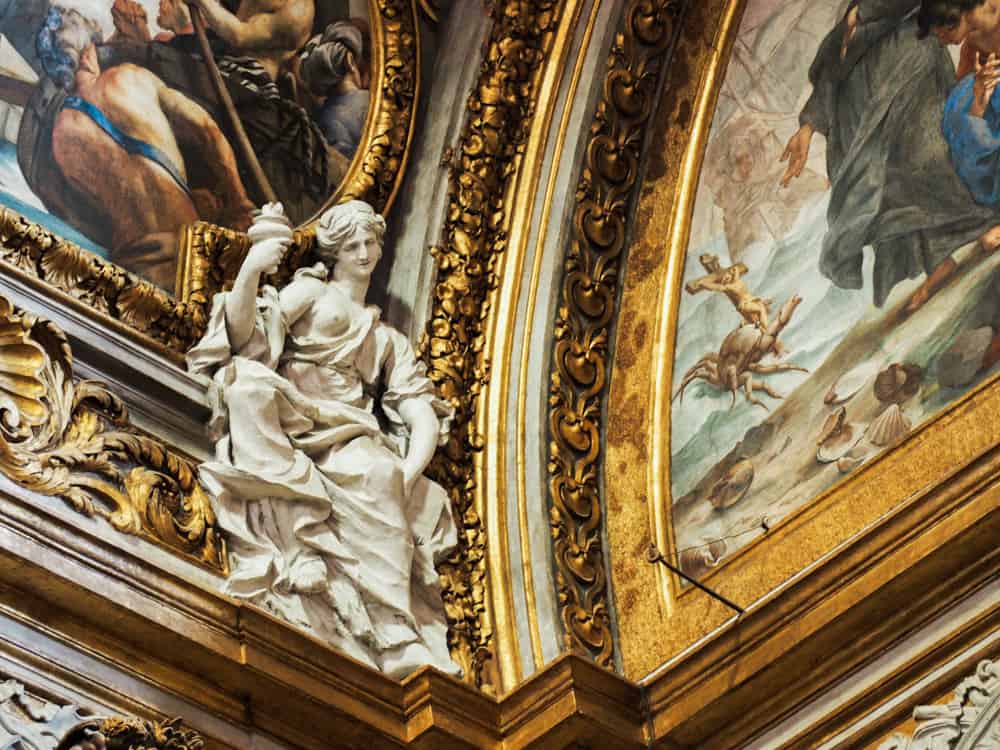
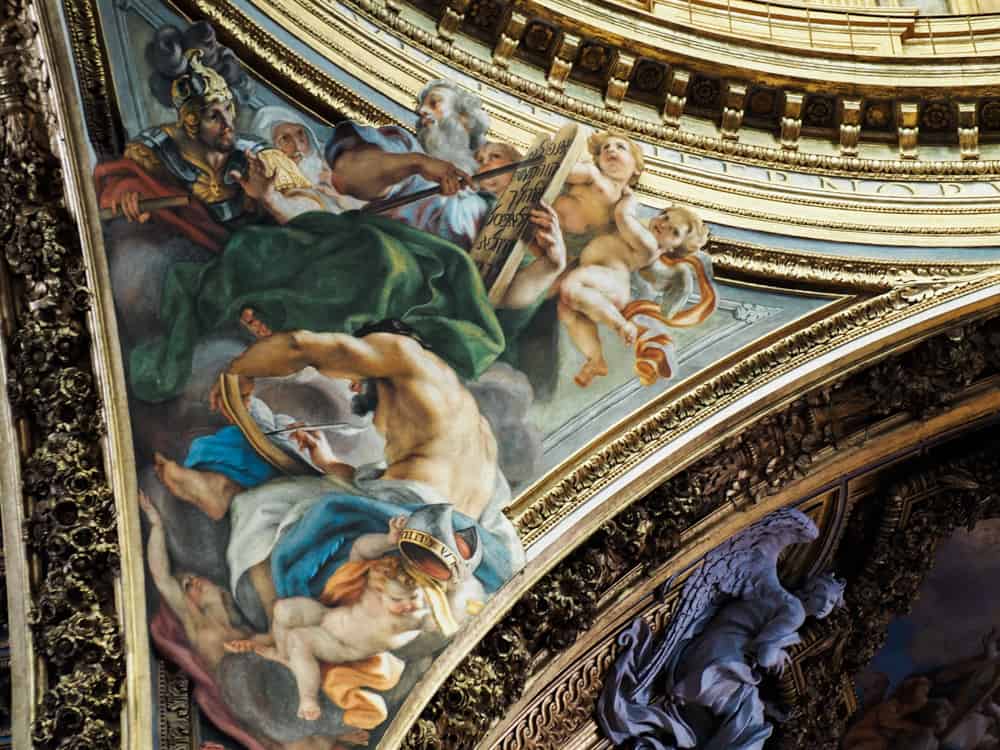
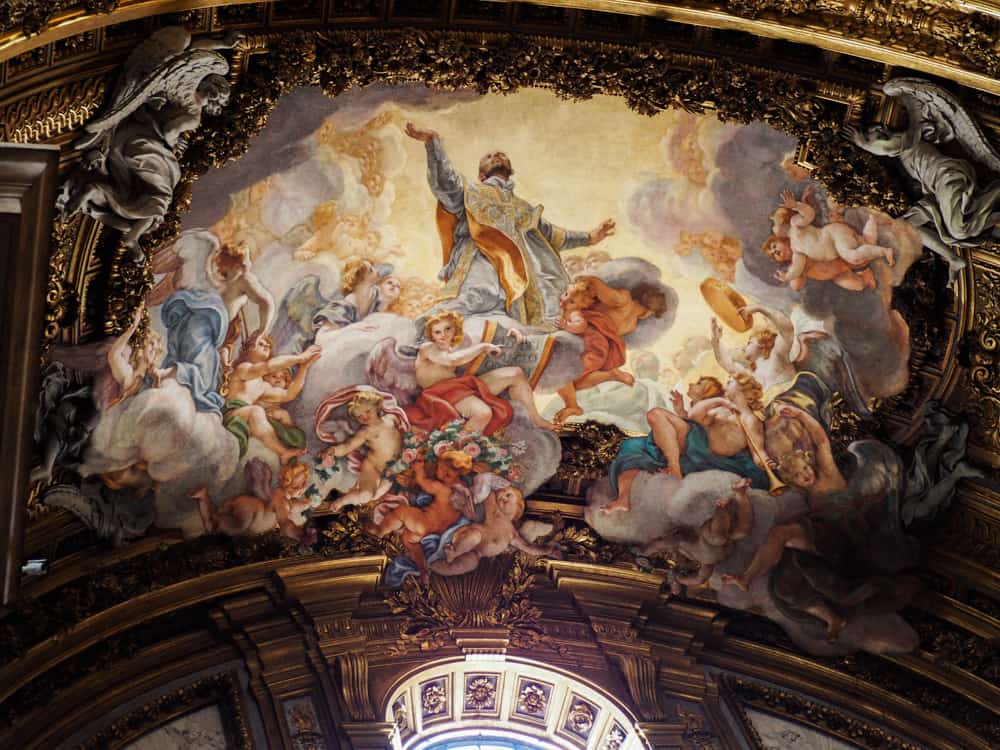
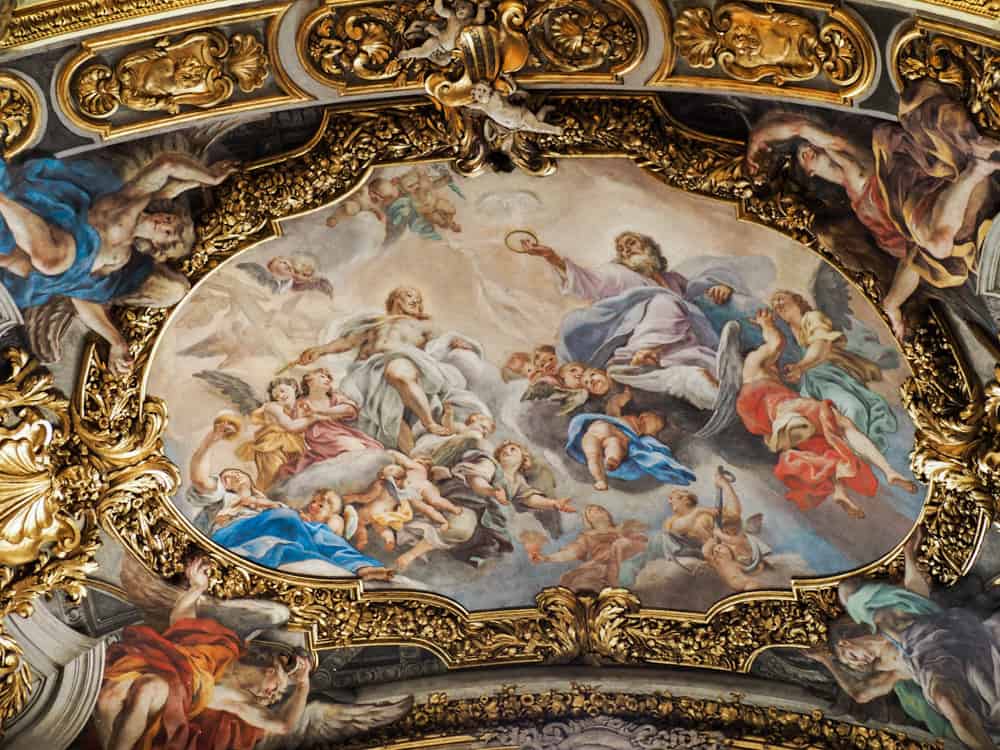
Santa Maria in Aquiro
Address: Via della Guglia, 69B, 00186 Roma RM, Italy
The Santa Maria in Aquiro is a church in Rome, Italy located on Piazza Capranica. The church’s grounding was in the 8th century, but it wasn’t completed until the 16th century. The most important work of art featured in the church is a painting of Madonna and Child with St. Stephen, however, several renowned artists have art in the chapels which include the likes of Caravaggio.
For more history of the church, Wikipedia says:
The church is ancient – it was restored by Pope Gregory III in the 8th century, and thus must have existed before then. One theory is that it was the titulus Equitii, though San Martino ai Monti is a more likely candidate. It is also referred to as Santa Maria della Visitazione, notably by Pope Urban VI in 1389. The origins of the name are nebulous; most attribute it to a corruption of the term a Cyro, perhaps referring in early days to a neighborhood resident. According to another theory Acyro refers to a corruption of the Latin word “circus”, a stadium for horse racing, which was located in the vicinity. In 1540, Pope Paul III granted the church to the Confraternity of Orphans, and it was restored in 1588.
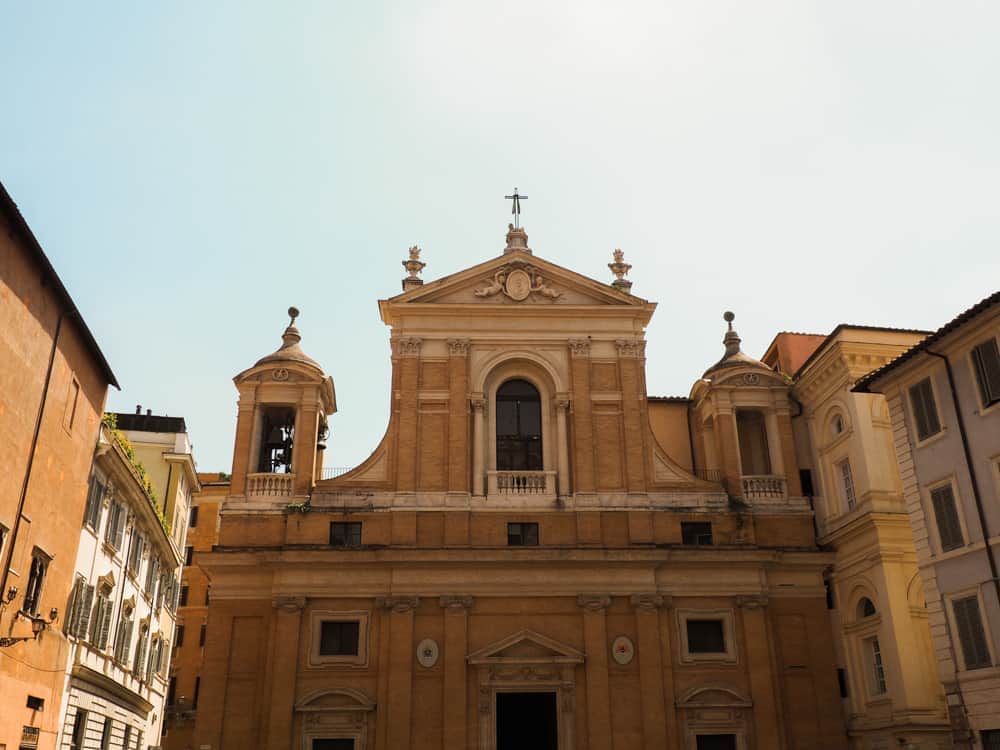
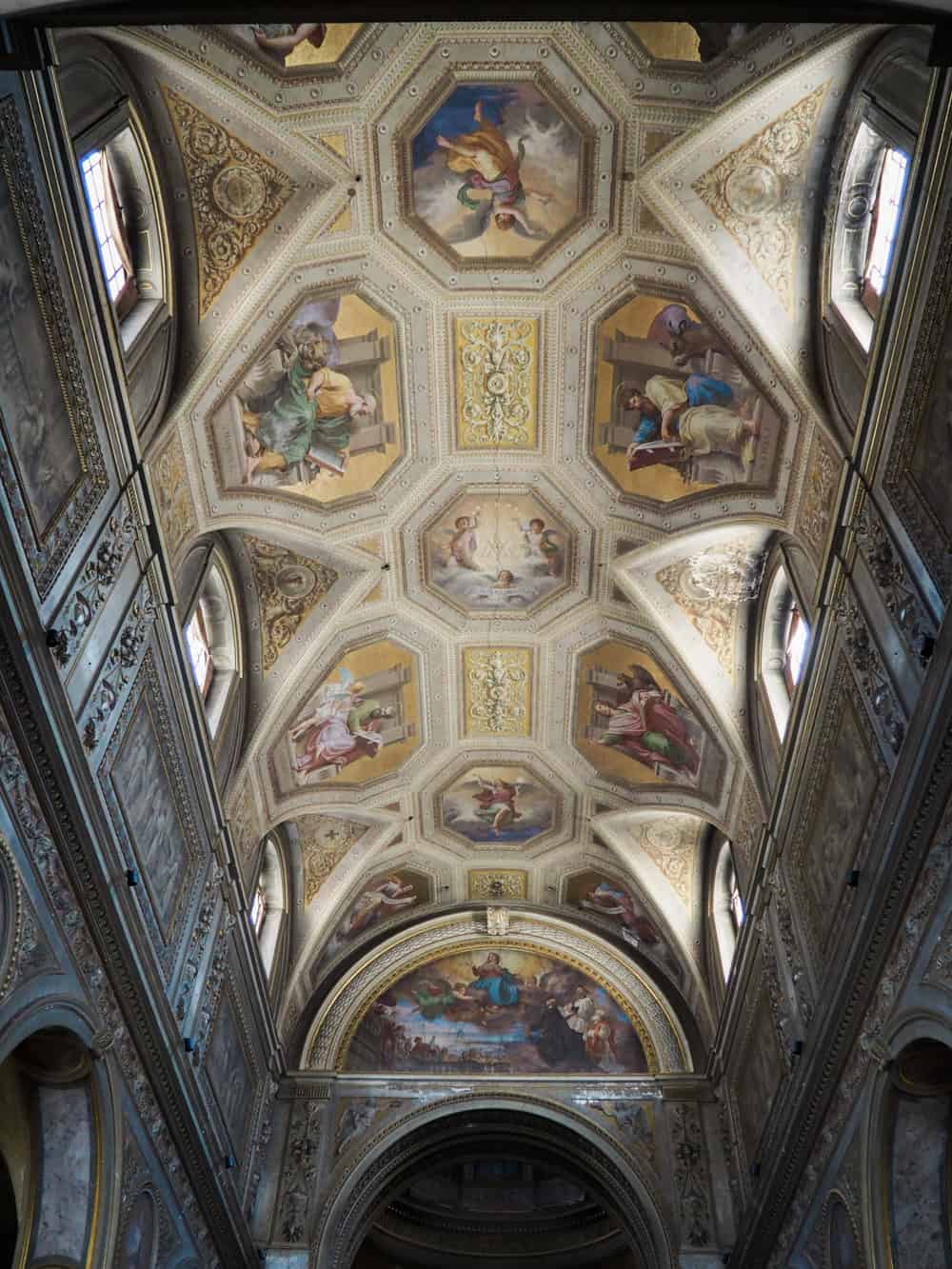
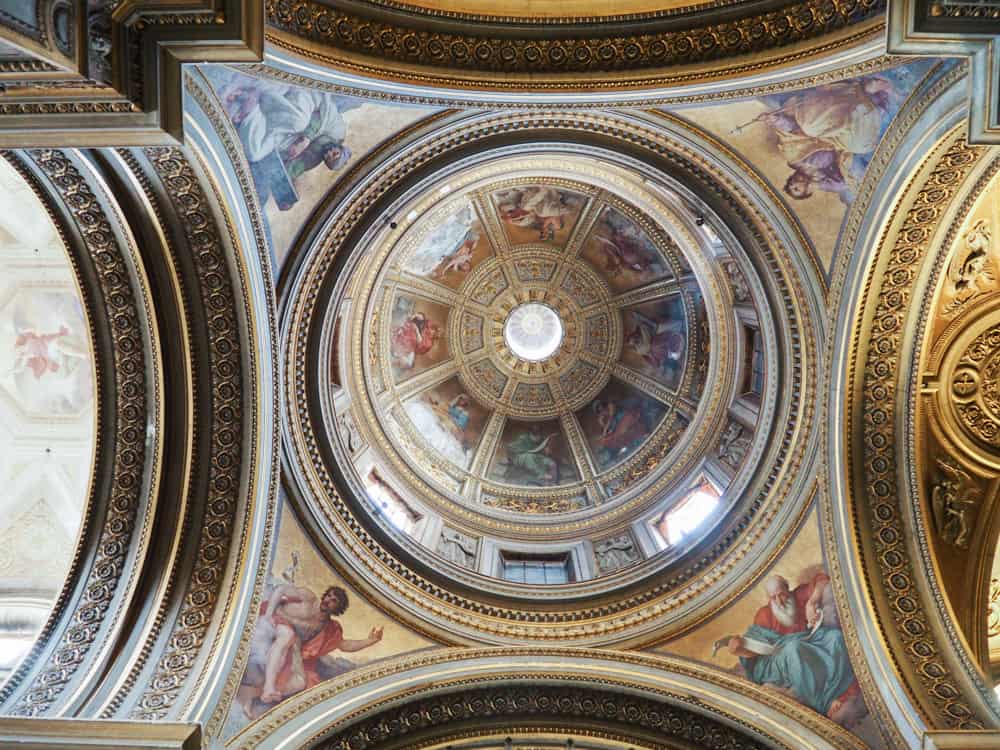
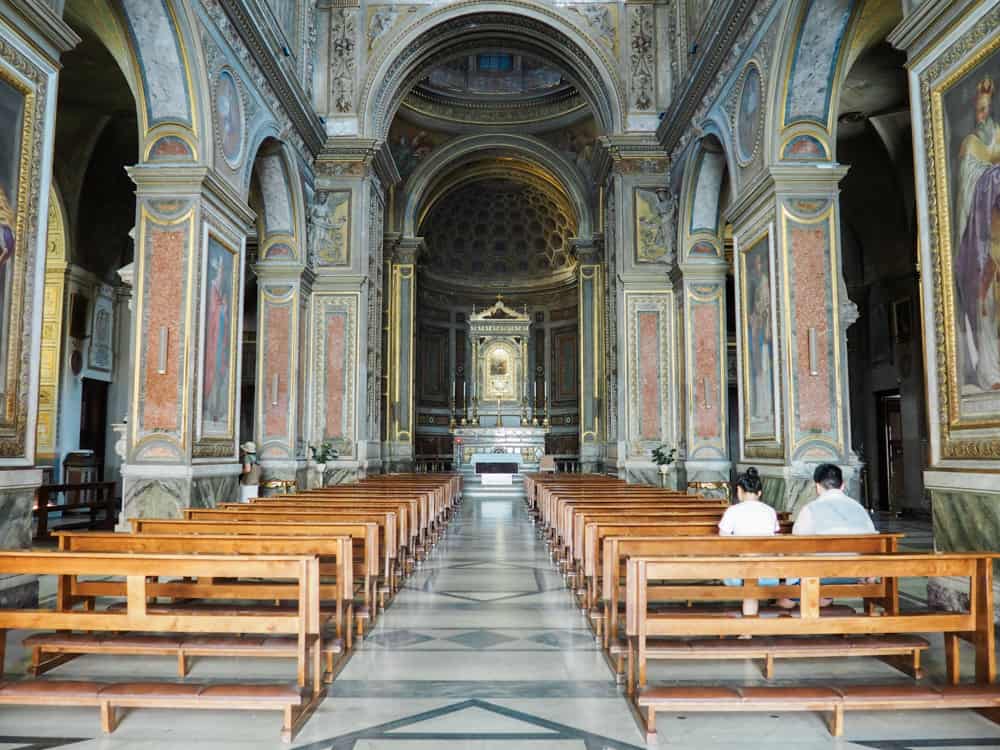
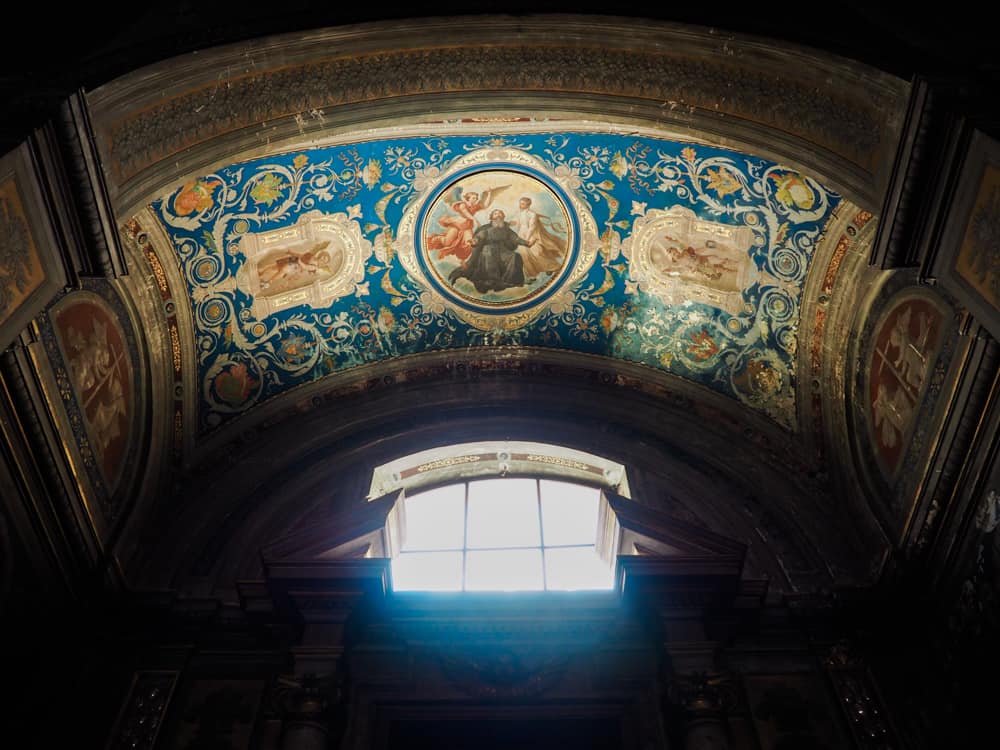

The Church of St. Ignatius of Loyola at Campus Martius
Address: Via del Caravita, 8a, 00186 Roma RM, Italy
The Church of St. Ignatius of Loyola at Campus Martius in Rome, Italy is a baroque church that had its groundbreaking in 1626 and was completed in 1650. You can read about the history here, as it is pretty complex and there were many different purposes for this building.
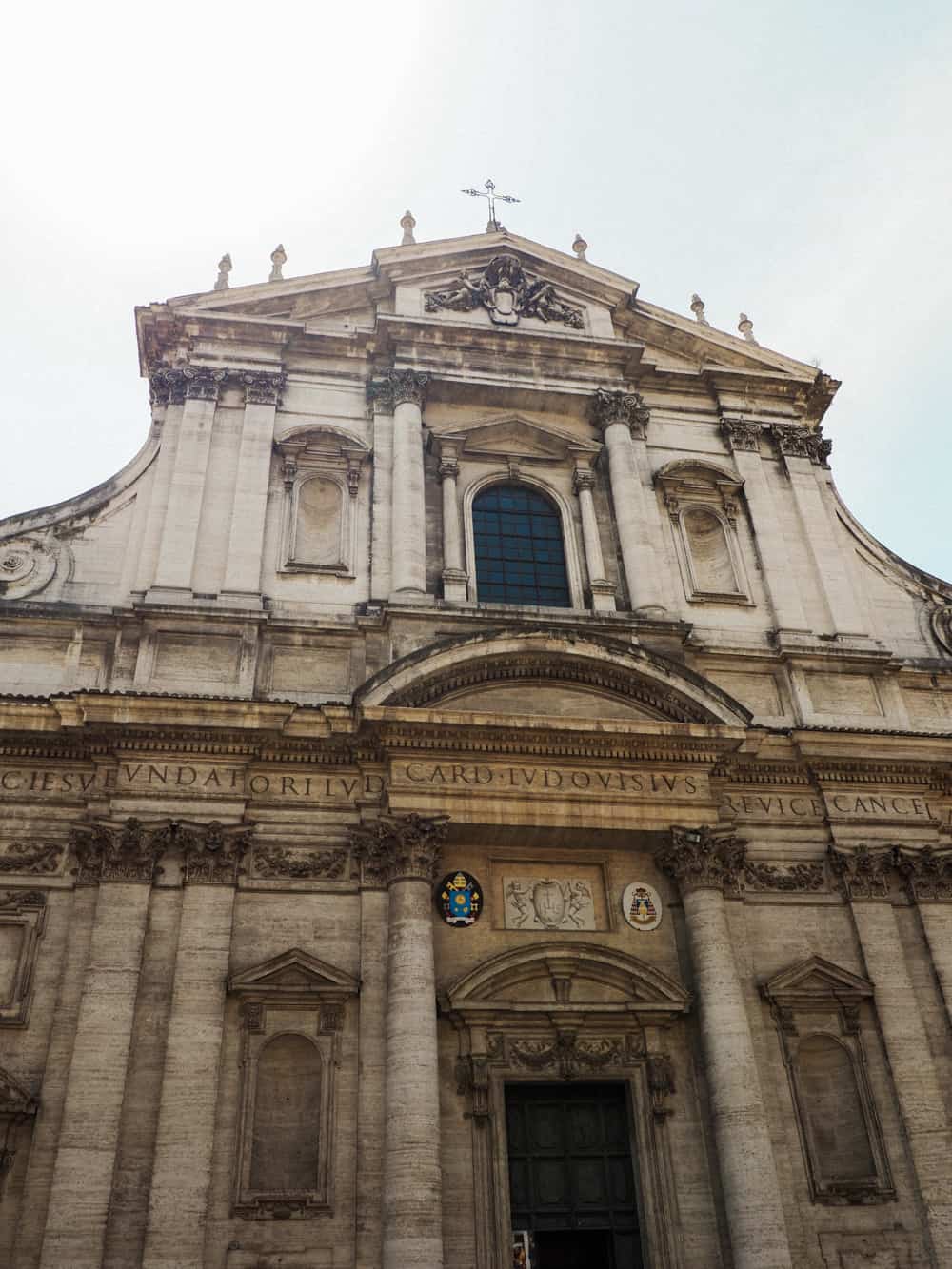
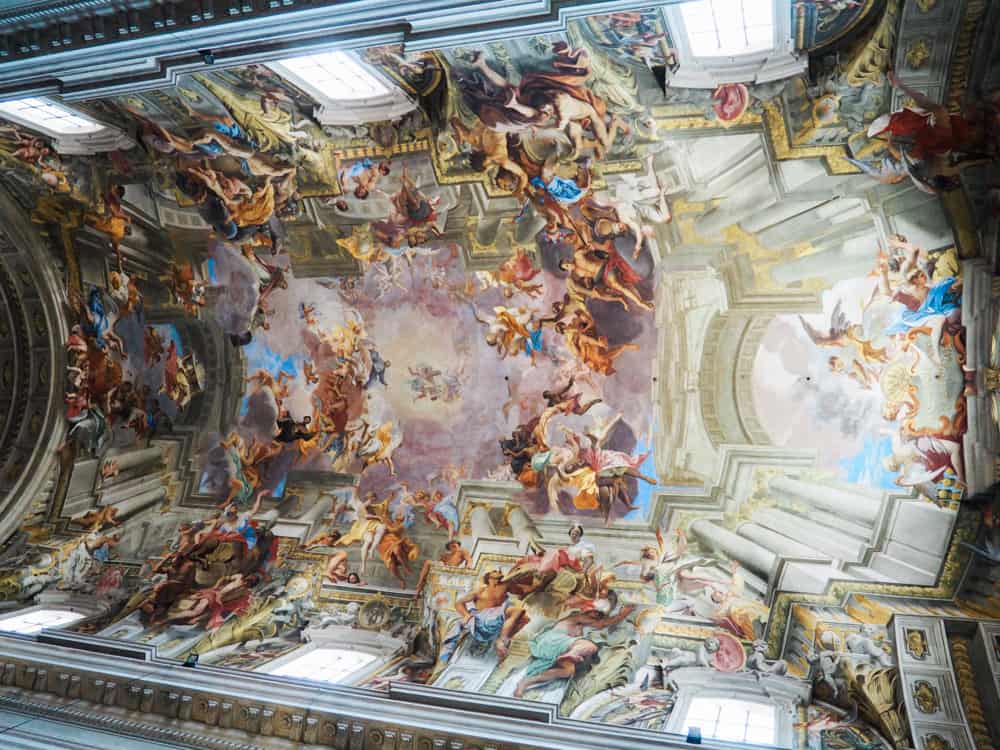
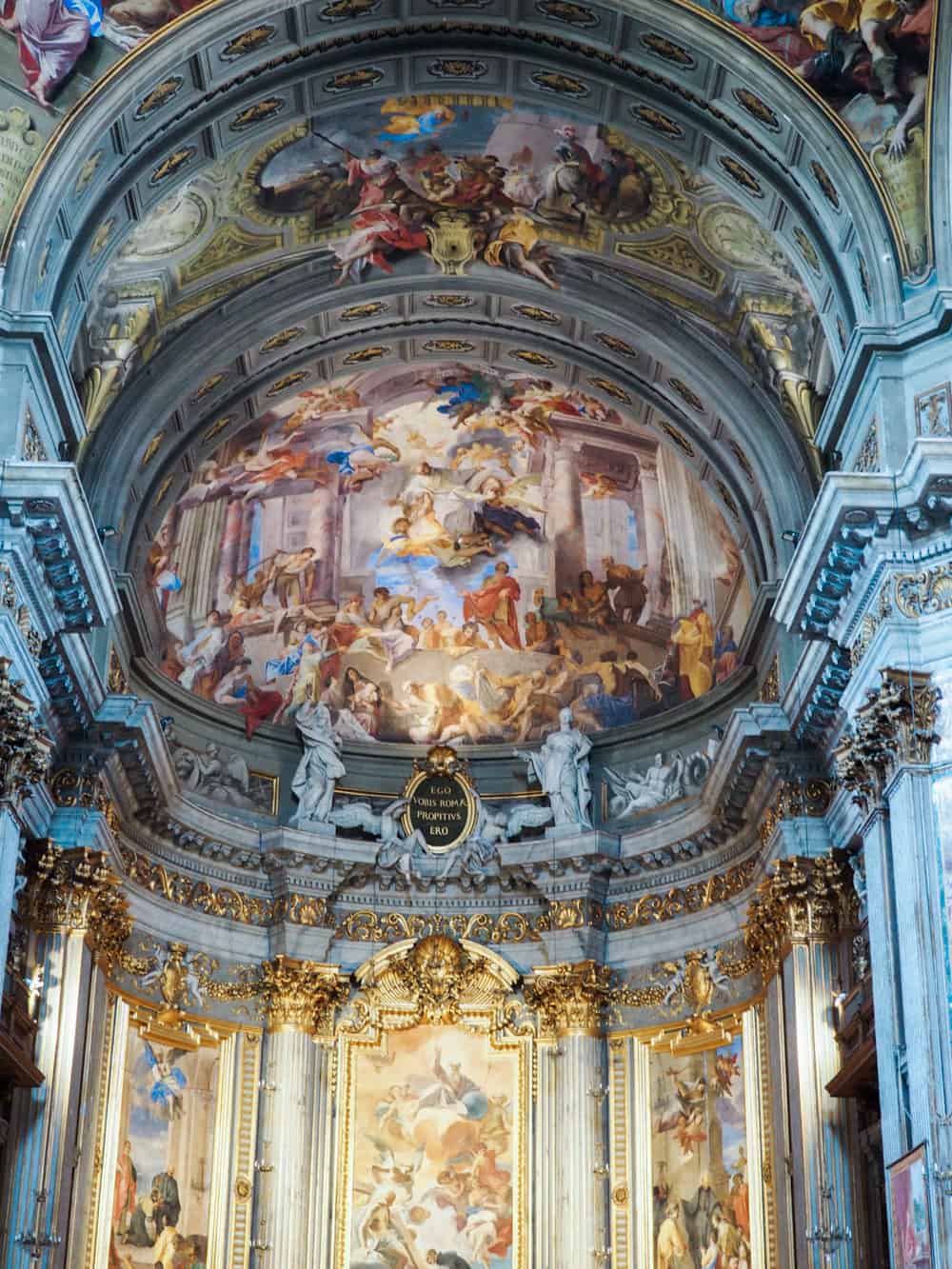
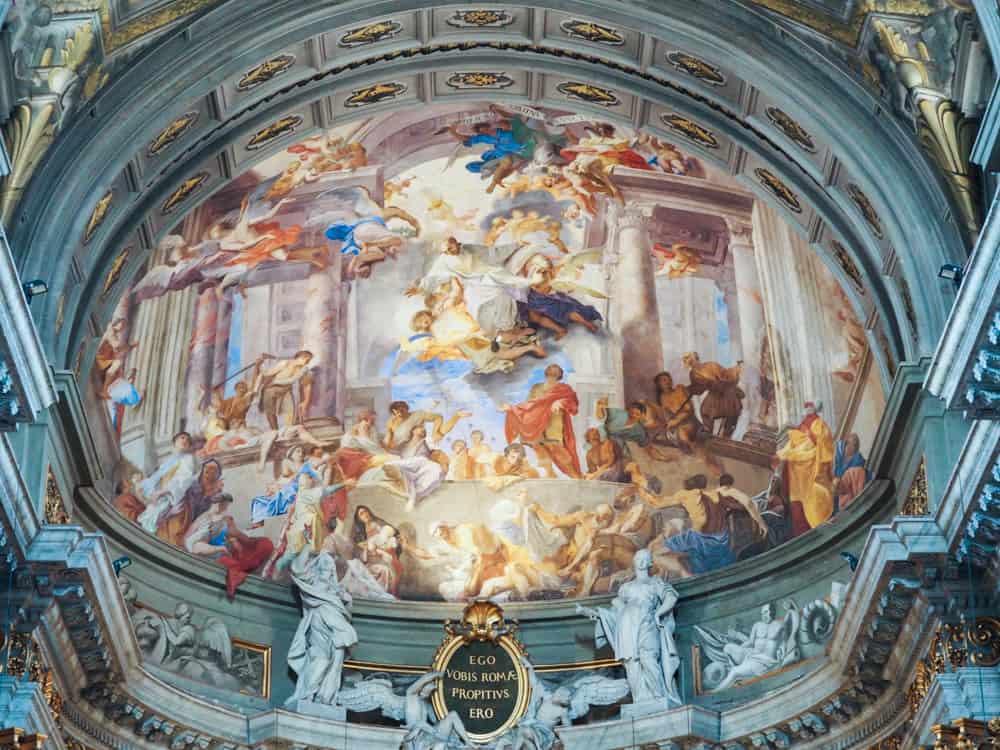
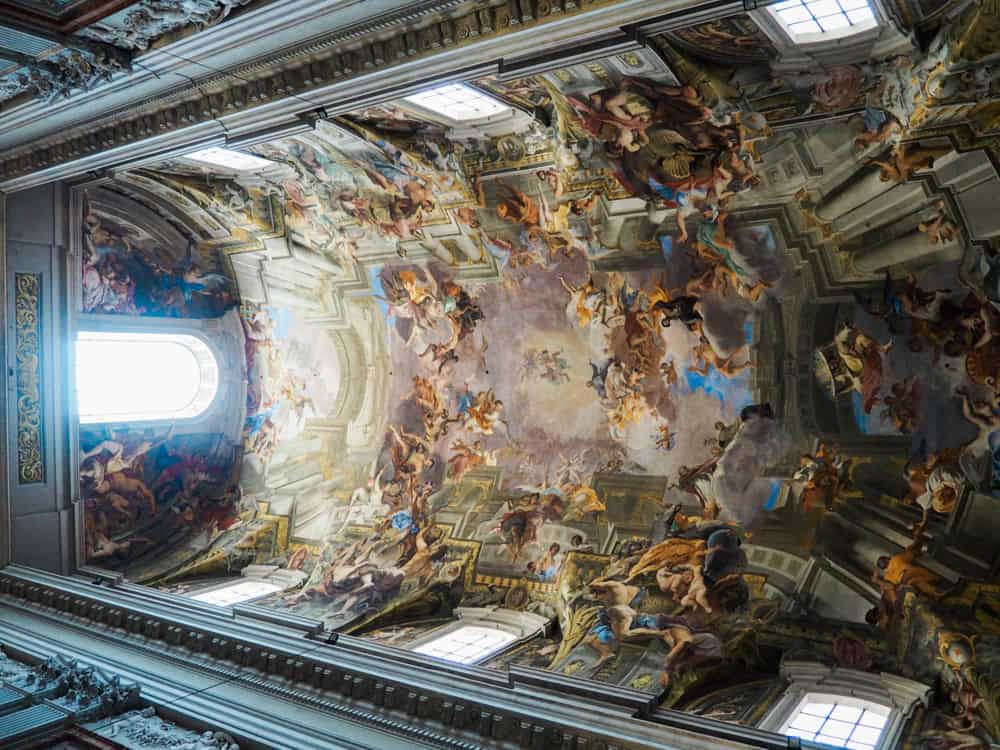
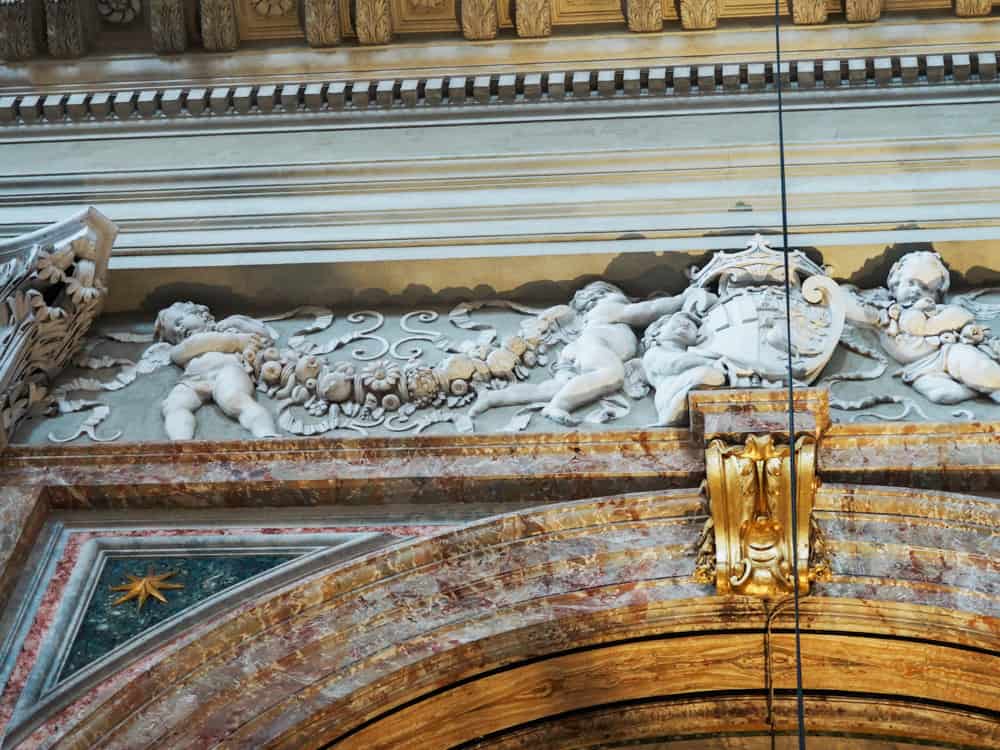
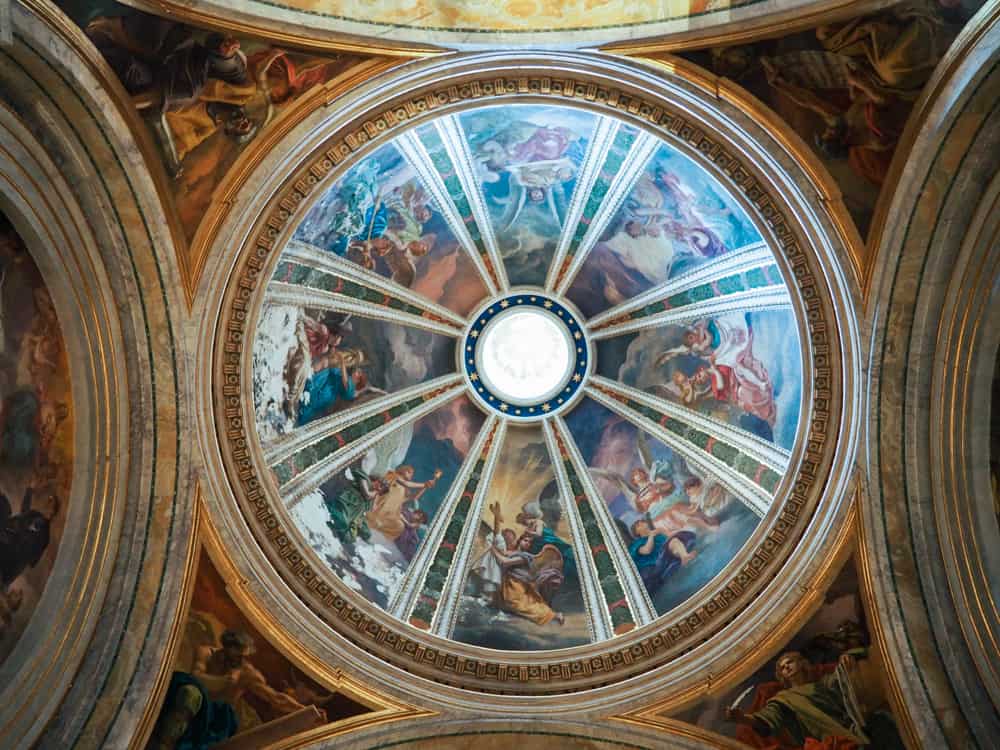
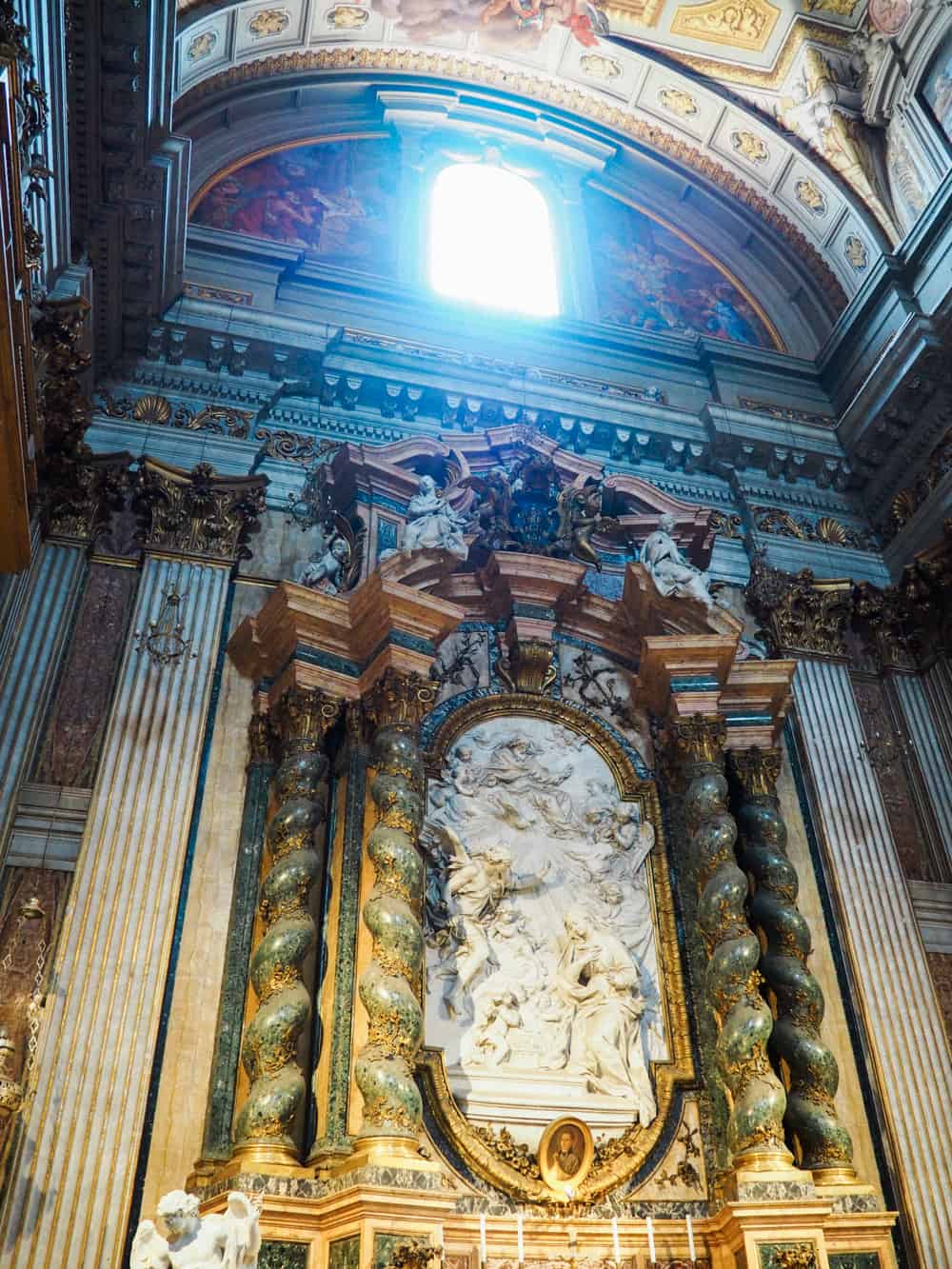
If you go to Rome, Italy, even if you are not the religious type, please go see the beautiful churches to see FREE art. There were many times my breath was completely taken away at the details and intricacy of what I saw. A few times, I admit to tearing up a little.
